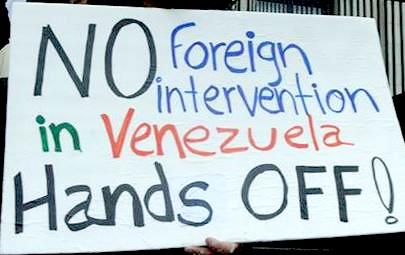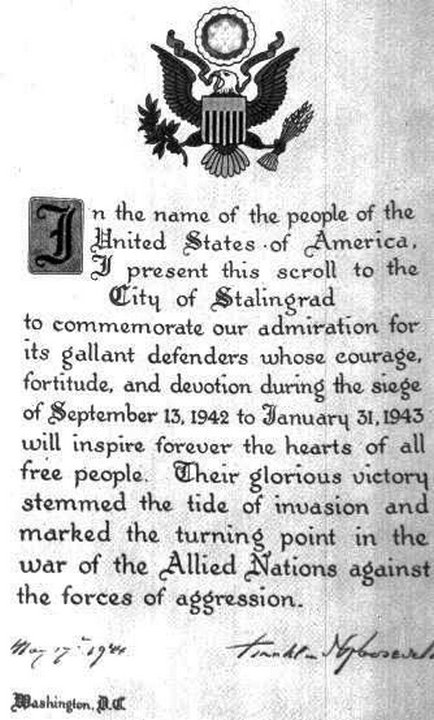
|
June 9, 2018 - No. 22 June 7 Unity March in Quebec City
• NORAD's
Presence at G7 The G7 Does Not Represent Us! June 7 Unity March in Quebec City
The evening of June 7 on the eve of the G7 Summit in
La Malbaie, several hundred people took to the streets of Quebec City
to firmly declare that
the G7 does not represent us. The action was organized by the
Anti-G7 Resistance Network, the Regroupement d'éducation
populaire en action communautaire des regions de Québec et
Chaudière-Appalaches
(RÉPAC), the Comité populaire Saint-Jean-Baptiste,
Eau Secours and Ni Québec, ni Canada: projet anticolonial.
These community groups defend the most vulnerable from the anti-social
austerity agenda, including people on welfare and the
working poor; defend immigrants and refugees, demanding legal status
for all and opposing deportations; fight for social housing, the
environment and stand with Indigenous peoples. The theme running through all the interventions and the demonstration was that the G7 does not represent us; it represents capitalism and its most oppressive, colonialist and militarist features, under the cover of pretty phrases. "With the G7, the militarists speak of peace, the misogynists speak of women's equality, and the capitalists speak of the environment," said a representative of the Anti-G7 Resistance Network. The RÉPAC representative said that this action brought together people from all walks of life, active on various fronts, who came to deliver a message of unity against the G7. She said that people are refusing to gather in what the ruling elite and its police forces have decreed the "free expression" space, a fenced-in area at La Malbaie. She said that people are going to protest in the streets, in full view of everyone. An Innu activist then welcomed everyone to what she said are Innu, Algonquin, Cree, Atikamekw and other lands known as Quebec. She said the G7 is pursuing the colonialist and genocidal undertaking against Indigenous peoples that has been ongoing since colonization. She specifically denounced the "strategy of extinguishing Aboriginal hereditary rights and Aboriginal title" that is being pursued today. She said that from missionary times, to Indian reserves, to today's reconciliation, it is the goals of the colonizers that are served, to the detriment of Indigenous peoples' hereditary and treaty rights and at the expense of Mother Earth. She denounced the efforts of the G7 countries to take over even more Indigenous territories by buying off Indigenous leaders and making them believe that First Nations' place is at the table, while their peoples' rights are being suppressed. A representative of the Anti-G7 Resistance Network dealt briefly with the five themes proposed by the Trudeau government for the G7 Summit, highlighting the blatant contradiction between the nice sounding phrases and what is actually going on. With respect to the Trudeau government's claim that the G7 is "building a more peaceful and secure world," he pointed out that people in their millions are being forced out of their homes and countries by the wars in which the G7 countries are involved and then deprived of rights when the G7 countries receive them as refugees and immigrants. He denounced the arms sales by G7 countries around the world as a way of making private investments secure. Other speakers also addressed how the G7 does not represent us.
Participants then marched through the very busy streets of downtown Quebec City. Passers-by waved in support of the action while some people on their balconies banged pots and pans, a reminder of the students' militant struggle in 2012. At one point, in front of a federal government building, federal public servants, members of the Public Service Alliance of Canada, walked out with their flags and signs in support of the demonstrators. For about an hour and a half, the marchers chanted slogans against the G7, capitalism and colonialism, the omnipresent police deployment in the city, deportations and other attacks on the people and called for status for all.
Police were everywhere, heavily armed and in
full
riot gear, often with dogs, looking like the Robocop of U.S.
movies. Some followed the protesters while others were stationed
in front of official buildings. At least three arrests were made
during the protest, according to media reports the following
day for "uttering threats," although what the protesters saw with
their own eyes were young people being kidnapped from the
demonstration, grabbed by the police and forced into police
cars. The protesters vigorously denounced the arrests but made
sure they stayed together as a group and continued the march.
(Photos: I. Lévesque, l'activiste, R.M. Mehreen)
NORAD's Presence at G7 Radio-Canada announced June 3 that NORAD had set up two temporary military camps to carry out radar aerial surveillance. One camp is located at Saint-Roch-des-Aulnaies and the other in Saint-André-de-Kamouraska. Saint-André-de-Kamouraska Mayor Gervais Darais had this to say about the military: "They do not identify themselves, they have had no contact with the municipality. The only contact we had with them was last March, when they asked us to open up the seasonal road leading to the site." The mayor of Saint-Roch-des-Aulnaies said that around a dozen U.S. and Canadian soldiers have been deployed to the community. The municipality rented land to the military for $1,000 per day. Both municipalities are located on the south shore of the St. Lawrence River. (Radio Canada) Citizens of La Malbaie Say NO! to G7
La Malbaie area community groups, including Centre-Femmes aux Plurielles and Groupe Action Jeunesse de Charlevoix, organized a march June 3 to oppose the holding of the G7 Summit in their region. Part of their action included forming a human chain along the fence surrounding the "free expression zone." In an interview, organizers highlighted the importance of the action as a means to express their opposition to the anti-democratic character of the G7, the consequences of the anti-social policies of G7 member countries for their peoples, as well as the danger of war they represent. A representative from Centre-Femmes aux Plurielles also pointed out that the vast sums of money being injected into the holding of the G7 for purposes of political repression and to limit the right to peaceful protest should have been invested in social programs. Speaking about all the measures that have been taken in the name of security, in particular the huge 3.7 kilometre-long, 3.5 metre-high fence surrounding the Summit area, one participant told the press: "As day by day, little by little we saw it being erected, more and more we feel walled up, cornered, we have no freedom of action [...]. This creates stress, anxiety." Many organizations and participants said they would join actions in Quebec City to continue to let it be known that the G7 is not welcome in Quebec.
(Photos: CIHOFM, Centre-Femmes aux plurielles,Comité populaire Saint-Jean Baptiste, @TheTocsin) The Irrationality of Steel and Aluminum Tariffs Failure of G7 Seen in International Trade AgendaCommentators have spoken and written reams regarding President Trump's imposition of tariffs on steel and aluminum and his refusal to sign a new NAFTA deal. This trade agenda is dominating the G7 Summit with claims that most members are opposed to tariffs and trade wars and want a rules-based system. All are united, however, when it comes to the global neo-liberal direction they have set for their economies and they refuse to admit that the G7 has given rise to disasters all over the world. G7 leaders and media speak as if the sky is falling and nothing can be done or understood of Trump's actions. International trade is made to appear as imponderable and beyond the grasp of mere mortals. Aluminum Imports into U.S. and the 10 Per Cent TariffThe oligarchs in control of the steel and aluminum sectors are global actors with private interests scattered throughout the world. Oligopolies such as those formed by mining and aluminum producer Rio Tinto and global aluminum producer Alcoa are larger than many states in terms of gross income and the new value their workers produce. The concentration of social wealth and power in the hands of a few is unlike anything the world has ever seen. Alcoa has private interests in the U.S., Canada and elsewhere. Although these giants export aluminum into the U.S. market, they appear to gain from the Trump 10 per cent tariff, as market prices for the metal have risen since the tariff became a talking point last January.[1] The tariff acts similarly to a sales tax on the buyer. The U.S. federal government will receive over $2 billion in tax revenue annually from the tariff. Generally, the tax is added to the market price the U.S. consumer must pay. This is particularly the case with aluminum as current internal U.S. production and potential for increase are very limited with regard to overall demand. Trump's remarks that the aluminum tariff is meant to create jobs in the U.S. sector do not appear to have substance. In fact, they appear irrational. The existing smelter capacity in the U.S. is incapable of supplying the demand. Rebuilding smelter capacity would take years to accomplish and may itself be an irrational response under current conditions. The rise in market prices from tariffs could possibly allow Alcoa to re-commission several stalled U.S. aluminum smelters it owns and controls but as yet it has not made any steps in this regard. The amount of potential production in the U.S. is not large, and besides, international production from Alcoa can meet demand and increasing U.S. production would depress prices. The current higher prices could stimulate more internal recycling of aluminum but again even that amount would come nowhere near to meeting current demand without the global supply from Canada, China, Russia and elsewhere. The aluminum producers Rio Tinto, Alcoa and Alouette together form the Aluminum Association of Canada. Together, the big three or rather big two dominate primary aluminum production in Canada. They have nine plants in Quebec and one in Kitimat, BC with a total of 8,000 workers. The Aluminerie Alouette Inc. smelter in Sept-Iles, Quebec alone produces 606,000 metric tonnes a year, which is only 134,000 tonnes short of the current entire U.S. primary production of 740,000 tonnes. Rio Tinto owns 40 per cent of the Alouette smelter. Canadians do not control any of the big three. To meet demand, especially for their war economy, U.S. buyers of aluminum import over 6 million metric tonnes a year. U.S. manufacturers have greatly benefited from cheaper imported aluminum. U.S. government 2017 statistics report the main suppliers as follows (the amounts, in U.S. dollars, include both primary and recycled aluminum imports):
1. Canada: $8.5 billion
(36.3%) The Aluminum Association of Canada, along with similar associations from the U.S., Europe and Japan, held a forum in Montreal June 3-4 prior to the G7 Summit. The apparent goal of those primary aluminum producers and recyclers was to form a united front against the competition from Chinese production, which has become globally dominant. The communiqué from the forum does not mention the Trump tariff but only the need to resist the dominance of Chinese competitors in the sector. They will present their views and demands at the G7 Summit and later at the G20 Summit. The forum did not specify how their members would counter the dominance of Chinese (and Russian) competitors in the sector or what they wanted the G7 leaders to do.
Total global production of
aluminum for 2017 = 63,404,000 metric tonnes In 2012, the U.S. produced 2,070,000 metric tonnes. Much of that productive capacity has been decommissioned, as imported aluminum from Canada, China and Russia is far more cheaply produced. The main already-produced value needed for primary aluminum production is bauxite and electricity. The transferred-value from electricity forms around one-third of the final price of production. The price of production of electricity is much higher in the U.S. than in Canada, China and Russia. Trump's tariffs on aluminum imports will only make a small dent in the 6 million imported tonnes. Some U.S. production may come on stream, probably from increased recycling. The biggest difference will be the higher market price, not only in the U.S. but worldwide, at least for a time. The higher price is also a result of the global economic recovery from the 2008 crisis and the ever-increasing war preparations and global sales of military planes, missiles, bombs, ships and other means of destruction.
Private interests concentrated within global companies characterized as oligopolies and cartels, such as Rio Tinto and Alcoa, have become supranational entities. They marshal their power of privilege, control, social wealth and contacts to manipulate in their favour the affairs of economies and states. They confront other private interests in a permanent condition of competition and collusion. The competition and collusion to serve their private interests and not the common good reduce all other considerations to secondary pragmatic issues, only of concern if they affect their primary aim and motive to expropriate as much as possible of the new value workers produce. For example, Rio Tinto together with Alcoa have locked out workers at their jointly owned aluminum smelter in Bécancour, Quebec to force higher prices in North America and put pressure on workers and the Quebec government to accept concessions on terms of employment and the price of electricity. This action directly contradicts the interests of the working people at the smelter, in their community and throughout Quebec and Canada. The entire world is blocked from moving forward. The control of these private interests, these uber rich oligarchs concentrated in oligopolies and cartels, reduce the working people to spectators of their own economy, into impotent onlookers of the affairs that affect their lives. The main business and actions of states have been reduced to serving the private interests of competing oligarchs resulting in a continual condition of civil war for political power and control. The decisions of Trump, Trudeau and other G7 members on trade are of this obscurantist nature. They reflect the irrationality of a world gone mad in competition to serve powerful private interests in a race to be first and dominant. Imperialist competition is in contradiction with the necessity for cooperation to solve the problems of today's economy and world. The ruling oligarchs and their mania to serve their private interests and all else be damned is out of sync with the modern world and its socialized productive forces. Today's world and its peoples are interconnected; their economies are interrelated. They need cooperation for mutual benefit and development to solve their problems and allow the productive forces of industrial mass production and social product to reach their full potential to guarantee the well-being and security of all and not the narrow private interests of a privileged few. They need the human factor/social consciousness and empowerment now of the working people to bring this necessary cooperation and unity into being.
This world of socialized productive forces has the material capacity to sort out all problems facing humans and the social and natural environment. What is absent from making it happen? There is not any attempt to make rational the irrationality of the actions of the oligopolies and their political servants and states and their unbridled competition to favour their narrow private interests. Crucially absent is the empowerment and control of the actual producers, the working people within the socialized economy where they work and live. The pro-social aim, outlook and potential control of the working people are in conformity with the modern social and productive conditions. They are the necessary human factor to sort things out. The struggle is centred on empowering and bringing into being the control and pro-social aim of the working people. International trade under the modern productive forces is understandable only within the pro-social outlook, interests, and social conditions of the actual producers who create the social wealth and reproduce their own human condition and the socialized economy. The working people, the mere mortals who are the essential human factor of the modern world, have to empower themselves now and emerge from under the suffocating anti-social control and outlook of the imperialist oligarchs. They have to become masters of their own thinking, outlook and interests and extend their control to all the affairs of the economy and state that affect their lives. This is the only way to make international trade rational. This is the only way to bring sense to their lives and open a path forward.
Note 1.
2. Figures from the International Aluminium Institute. For list of aluminum smelters worldwide click here. Opposition to Trudeau Government's Bailout of Kinder Morgan National Day of Action at MPs' Constituency Offices
Signs and slogans decried the use
of public funds to bail out a private U.S. oil monopoly, the fact that
Canadians are totally shut out of decision-making on this matter
and that the Trudeau government has reneged on yet another
commitment, in this case that the affected Indigenous peoples are
consulted and give their consent to the project. People
rejected Prime Minister Trudeau's justification that this
pay-the-rich scheme is in the "national interest" and resolutely
opposed such illegitimate decisions being taken in their name.
Copies of a petition opposing the project and the government's
bailout were delivered at these actions as well. More than
250,000 people have signed this petition. Prince George, BC Red Deer, AB Winnipeg, MB (Photos: B. Appledorf, K. Balzer, M. Youds, L. Collins, Rise Resist Kinder Morgan, H. Tuffs, Dogwood Society, Peace Arch News, M. Fatur, J. Smith, M. Jacques, Saskatchewan Climate Justice, S. Moreton, K. Armstrong, LeadNow, E. Bland, J. Green, 350 Canada, Council of Canadians, Cmry) Canada's Warmongering Participation in NATO War Exercises Make Canada a Zone for Peace
The Trudeau government is a war government which is expanding its role in the U.S.-led aggressive NATO military alliance occupying Europe. In the first half of June it is participating in two war exercises as part of Operation Reassurance, Canada's contribution to NATO deployments in Central and Eastern Europe, aimed at encircling Russia and supporting the counterrevolutionary regime in Ukraine. One of these is Summer Shield, taking place in Camp Adazi, Latvia from June 2 to 13 with the Latvian National Armed Forces. The other war games, Sabre Strike 18, being held in Poland and the Baltic states, began on June 3 and continue to June 15. Sabre Strike 18 is under the overall command of U.S. Army Europe and involves some 18,000 troops from 19 countries organized into NATO's four Forward Presence Battle Groups in the region. The U.S. leads the battle group in Poland, while Germany, Britain and Canada command three others in Lithuania, Estonia and Latvia, respectively. Sabre Strike 18 will coincide with the Swift Response airborne drill in Latvia, which culminates on June 8 and involves 800 paratroopers from the U.S., Latvia, Lithuania, Israel and Poland. The heightened war preparations pose a real danger to
the
cause of world peace. "The long-standing U.S. Army Europe-led
cooperative training exercise [Sabre Strike] is designed to
enhance readiness and interoperability among allies and regional
partners," the U.S. Army said. While it claims to be preparing
for aggression, saying that the manoeuvres will "demonstrate the
alliance's determination and ability to act as one in response to
any aggression," the fact is that it is the U.S. and colonial
powers of Old Europe which intervene in the affairs of sovereign
countries and commit aggression.
This year marks a worrisome increase in war games by NATO and its allies in the region over last year. Already about 100 war exercises have been organized, 20 per cent more than during the same period in 2017. The size of the exercises has also been increasing. The number of troops involved in Sabre Strike was 2,000 in 2013; 4,700 in 2014; 6,000 in 2015; 9,000 in 2016 and 11,000 in 2017. In May, NATO held the large Siil (Hedgehog) exercise in Estonia and northern Latvia involving more than 15,000 troops. NATO informed in a June 7 press release, "In total, 106 NATO exercises are planned for 2018. Allies will lead around 180 national and multinational exercises this year. In 2017, NATO conducted 108 exercises and Allies held 162 national and multinational exercises. "The exercises led by NATO and Allies this year include around 45 exercises with a primary focus on the land domain, 12 exercises mainly in the air domain, and 15 exercises focused mainly on maritime operations. Others train cyber defence, crisis response decision-making or specific capabilities. "More than 40 NATO and Allied exercises in 2018 will focus on tackling challenges from the South. Defending Allies in the eastern part of NATO is the focus of another 30 exercises. Nine NATO and Allied exercises will have a special focus on the North." Expansion of NATO Forces in Europe and Update
|
|
DPRK's Northern Nuclear Test Site Dismantled
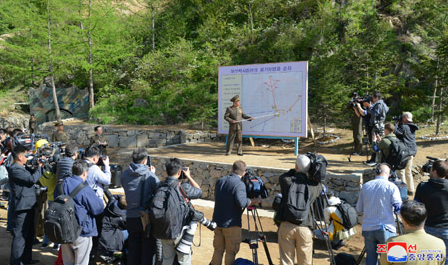
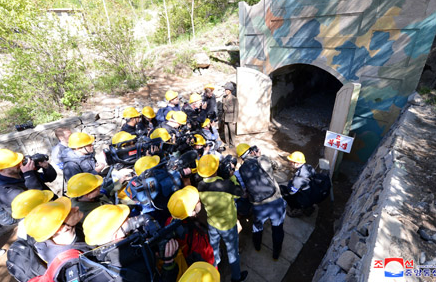
The northern nuclear test site of the Democratic
People's Republic of Korea (DPRK) was completely dismantled according
to the decision made at the Third Plenary Meeting of the Seventh
Central Committee of the Workers' Party of Korea (WPK). The Korean
Central News Agency reported:
 After the publication of
the decision at the April plenary
meeting of the WPK Central Committee on dismantling the nuclear
test ground, relevant institutions including the Nuclear Weapons
Institute of the DPRK immediately stopped all preparations and
projects for nuclear tests and carried out phased
dismantlement.
After the publication of
the decision at the April plenary
meeting of the WPK Central Committee on dismantling the nuclear
test ground, relevant institutions including the Nuclear Weapons
Institute of the DPRK immediately stopped all preparations and
projects for nuclear tests and carried out phased
dismantlement.
The tunnels and all kinds of equipment, information communications and power systems and construction and operation equipment, that had been installed at the observation centre, control centre and research institute in the northern nuclear test site, were dismantled and withdrawn.
A ceremony to mark the complete dismantling of the test site was held May 24.
The process of the dismantlement was covered in the field by reporters from China, Russia, the U.S., Britain and south Korea. They were briefed on the methods and order of dismantlement of the test site and toured the tunnels where nuclear tests had previously been carried out and the test observation centres.
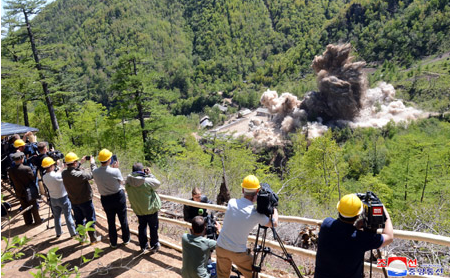 Following this, the final
step was the demolition by explosives of the tunnels, tunnel entrances
and above ground structures including the observation centres, in full
view of all those present.
Following this, the final
step was the demolition by explosives of the tunnels, tunnel entrances
and above ground structures including the observation centres, in full
view of all those present.
Once
this
final
stage
was
completed,
the
Nuclear
Weapons
Institute
of
the
DPRK
issued
a
statement
on the spot, affirming this action as the
expression of the DPRK's firm peace-loving stand to join in the
international aspiration and efforts for a total halt to nuclear tests
and make a positive contribution to building a nuclear-free world.
(Photos: KCNA)
Statement of Unity by Korean Americans and Allies
on Historic
Inter-Korean Summit and
Upcoming U.S.-DPRK Summit

On June 7, a broad group of Korean-American individuals and organizations and their allies published a statement in support of the Panmunjom Declaration for Peace, Prosperity, and Reunification and the upcoming U.S.-Democratic People's Republic of Korea (DPRK) Summit on June 12 in Singapore. The text of the statement follows.
***
Since the historic April 27 summit between the leaders of north and south Korea at Panmunjom, longstanding tensions and war threats on the Korean Peninsula have given way to the promise of peace and reconciliation. Soon, another historic summit, between the United States and north Korea, will take place in Singapore. The two parties, which not too long ago were on the brink of war, will finally sit down to discuss a peaceful settlement to the Korean War. All eyes of the world will be on this momentous event, which could determine not only the fate of the Korean Peninsula and Northeast Asia but also the prospect of global peace.
We -- Korean Americans who have long fought for peace and the self-determined unification of the Korean Peninsula, and allies who stand on the side of peace and justice and share a critical stake in the struggle for peace in Korea -- wish to make clear our views on the recent Inter-Korean Summit and the upcoming U.S.-north Korea Summit.
1. We applaud the Panmunjom Declaration for Peace, Prosperity, and Unification of the Korean Peninsula.
 In the Panmunjom
Declaration, the leaders of north and south
Korea "solemnly declared before the 80 million Korean people and
the whole world that there will be no more war on the Korean
Peninsula and thus a new era of peace has begun." They also
pledged to work together for independent unification.
In the Panmunjom
Declaration, the leaders of north and south
Korea "solemnly declared before the 80 million Korean people and
the whole world that there will be no more war on the Korean
Peninsula and thus a new era of peace has begun." They also
pledged to work together for independent unification.
The two leaders held hands as they crossed back and forth over the military demarcation line, demonstrating that the arbitrary line no longer has the power it once possessed as a symbol of division and confrontation. Should the governments of north and south Korea as well as the 80 million Koreans on the peninsula and the diaspora come together to implement the Panmunjom Declaration, we can realize peace, prosperity, and unification of the Korean Peninsula.
2. We welcome the U.S.-north Korea summit.
We hope the scheduled U.S.-north Korea summit will end seven decades of hostile relations between the United States and north Korea and usher in a new era of peace -- on the Korean Peninsula, in Northeast Asia as well as for the rest of the world.
We recommend the following:
1) The United States and north Korea should agree to denuclearize the Korean Peninsula and faithfully carry out the agreement.
In the Panmunjom Declaration, north and south Korea "confirmed the common goal of realizing, through complete denuclearization, a nuclear-free Korean Peninsula." Denuclearization of the Korean Peninsula means not only eliminating north Korea's nuclear weapons but also denuclearizing the land, air, and seas of the entire peninsula. This is not north Korea's obligation alone. South Korea and the United States, which has in the past introduced and deployed close to one thousand tactical nuclear weapons in the southern half of the peninsula, also need to take concrete steps to create a nuclear-free peninsula.
The plan to "denuclearize the Korean peninsula" is clearly outlined in the following past agreements:
- the 1992 Joint Declaration
of south and north Korea on the
Denuclearization of the Korean Peninsula;
- the 1994 Agreed Framework between the USA and DPRK; and
- the 2005 Joint Statement of the Fourth Round of the Six
Party Talks.
In the 2005 Joint Statement of the Six Party Talks, north Korea "committed to abandoning all nuclear weapons and existing nuclear programs," while the United States "affirmed that it has no nuclear weapons on the Korean Peninsula and has no intention to attack or invade the DPRK with nuclear or conventional weapons," and south Korea "reaffirmed its commitment not to receive or deploy nuclear weapons in accordance with the 1992 Joint Declaration of the Denuclearization of the Korean Peninsula, while affirming that there exist no nuclear weapons within its territory."
In keeping with the recent Inter-Korean Summit, the U.S.-north Korea Summit should produce an agreement for the "complete denuclearization of the Korean Peninsula" and ban the testing, production, reception, possession, storage, stationing, and/or use of nuclear weapons on the entire Korean Peninsula. Moreover, the United States should stop all military action and exercises that deploy or introduce its strategic assets on the Korean Peninsula and abolish its nuclear umbrella over south Korea.
Genuine peace on the Korean Peninsula, which has housed nuclear weapons in both the north and the south and has been the site of acute military tensions for decades, should set a historic precedent and lead to global nuclear disarmament. Starting with the United States, all nuclear powers should take concrete steps to create a nuclear-free world.
2) A peace treaty is necessary for a lasting peace system on the Korean Peninsula.
The Panmunjom Declaration states, "During this year that marks the 65th anniversary of the Armistice, south and north Korea agreed to actively pursue trilateral meetings involving the two Koreas and the United States, or quadrilateral meetings involving the two Koreas, the United States and China with a view to declaring an end to the [Korean] War, turning the Armistice into a peace treaty, and establishing a permanent and solid peace regime."
After the Korean War, the United States and north Korea signed an armistice that established a highly unstable system that has been at the root of all subsequent war threats on the Korean Peninsula. It's time to declare an end to the Korean War and replace the Armistice with a peace treaty to build a stable and lasting peace system on the Korean Peninsula. Only a peace treaty will prevent further threats of nuclear and conventional war on the Korean Peninsula.
The United States and north Korea should take immediate mutual steps to prevent military conflict and alleviate tensions. They should establish and maintain a military hotline and communications channel and halt all military exercises and other provocative actions. The United States should withdraw the THAAD missile defence system in south Korea. And in step with north and south Korea, which have agreed to "carry out disarmament in a phased manner" in the Panmunjom Declaration, U.S. Forces in Korea should take corresponding measures to reduce its troops.
3) The United States and north Korea should end hostilities and normalize relations.
The 2000 U.S.-DPRK Joint Communiqué states, "Recognizing that improving ties is a natural goal in relations among states and that better relations would benefit both nations in the 21st century while helping ensure peace and security on the Korean Peninsula and in the Asia-Pacific region, the U.S. and the DPRK sides stated that they are prepared to undertake a new direction in their relations."
After agreeing to denuclearize the Korean Peninsula and replace the armistice with a peace treaty, the United States and north Korea should begin talks to establish normal relations. As they did in the 2000 Joint Communiqué, the United States and north Korea should reaffirm "principles of respect for each other's sovereignty and non-interference in each other's internal affairs" and a "commitment to make every effort in the future to build a new relationship free from past enmity." The United States and north Korea should normalize relations and promote civilian exchanges in the areas of economy, culture, science, education, sports, and travel to foster mutual understanding between the peoples of both countries.
Above all, the United States needs to abolish its seven-decade policy of hostility and sanctions that isolate north Korea. It should lift all sanctions tied to north Korea's nuclear program, take north Korea off the list of state sponsors of terrorism, and unfreeze north Korea's assets. It should allow U.S. citizens to freely travel to north Korea. The United States and north Korea should also cooperate to recover the remains of U.S. servicemen in north Korea from the time of the Korean War as a step to addressing unresolved humanitarian issues and ending hostile relations.
3. We urge Washington's political leaders to put aside party politics for peace.
Past negotiations between the United States and north Korea have yielded meaningful moments of cooperation. There have been times when both sides made significant compromises with the shared goal of overcoming past hostilities and moving toward normalizing relations. They have produced outstanding agreements -- the 1993 DPRK-U.S. Joint Statement, the 1994 Agreed Framework, the 2000 U.S.-DPRK Joint Communiqué, and the 2005 Joint Declaration of the Six Party Talks -- that outline a path for resolving the nuclear crisis on the Korean Peninsula, creating a lasting peace system, and normalizing relations between the two countries.
However, none of these agreements were implemented. As a result, mistrust between the United States and north Korea only deepened and ultimately led us to the brink of nuclear war. With each change in administration in the United States, hard-won agreements made by the previous administration were essentially scrapped as the incoming administration adopted a default anti-north Korea posture. In light of this history, we have concerns about whether an agreement produced by the upcoming U.S.-north Korea Summit will actually be honored by the current and future administrations. Trump's withdrawal from the Iran nuclear deal underscores this concern.
The Trump administration should approach the upcoming summit with north Korea with sincerity and a commitment to carrying out whatever agreement is reached. We also urge Congress to put aside partisan interests in the historic interest of achieving peace in Korea and the world. We urge Congress to resolve to support the Panmunjom Declaration between north and south Korea and the upcoming U.S.-north Korea Summit.
4. We stand with all who struggle for a just and peaceful world.
The actions of the Trump and previous administrations have been detrimental to peace in the world. The United States is responsible for endless war in Afghanistan, Syria and Yemen, bloodshed in Gaza, and escalating tension with Iran. While it pours billions of dollars into waging wars and maintaining troops abroad, its people face widespread unemployment and austerity programs that cut them off from decent education, health care and housing. U.S. militarism abroad has also led to increased militarization of the police and state-sanctioned violence against communities of colour and gender non-conforming people at home.
We stand with people of conscience everywhere who
defend
peace, self-determination, and justice. It is our hope that the
Korean Peninsula -- once a land of strife, brutalized by over a
century of colonization, division and war -- will become a source
of strength and inspiration for all as a beacon for peace,
reconciliation, and unification in the 21st century.
(Photo: Zoom in Korea)
74th Anniversary of D-Day
The Landing at Normandy

D-Day landing in Normandy, June 6, 1944.
On June 6, 1944, during World War II, an invasion force
comprised of
Americans,
British and Canadians landed on the coast of Normandy, France. This
date known to history as D-Day, refers to the long-awaited invasion of
northwest Europe to open a
Second Front against the Nazi forces of Adolf Hitler who had
occupied France and most of Europe and had been waging a savage
war against the Soviet Union. To that time, the Soviet Union had borne
the brunt of the
fight
against Hitler. From 1941 to 1945, the Soviet peoples fought more than
75 per cent of the German and Axis forces and suffered the loss during
the war,
all-told, of more than 20 million people.
The landing at Normandy is said to be the largest amphibious invasion in history. The allies were able to establish a beachhead as part of Operation Overlord. The First United States Army attacked on the beaches, code-named "Utah" and "Omaha." The Second British Army assaulted the beaches, code-named "Gold," "Juno" and "Sword" with the Canadians responsible for Juno in the centre of the British front. The venture was formidable because the Germans had turned the coastline into a continuous fortress with guns, pillboxes, wire, mines and other obstacles.
Nearly 150,000 Allied troops landed or parachuted into
the
invasion area on D-Day, including 14,000 Canadians at Juno Beach.
The Royal Canadian Navy contributed 110 ships and 10,000 sailors
and the Royal Canadian Air Force contributed 15 fighter and
fighter-bomber squadrons
to the assault. Total Allied casualties on D-Day reached more
than 10,000, including 1,074 Canadians, of whom 359 were killed.
Eleven more months of fighting followed the Normandy landing until in
May 1945, the Red Army marched into Berlin and the Germans capitulated.
Today May 9 is celebrated as Victory in Europe Day to honour all those
who gave their lives to defeat the Nazi-fascists.
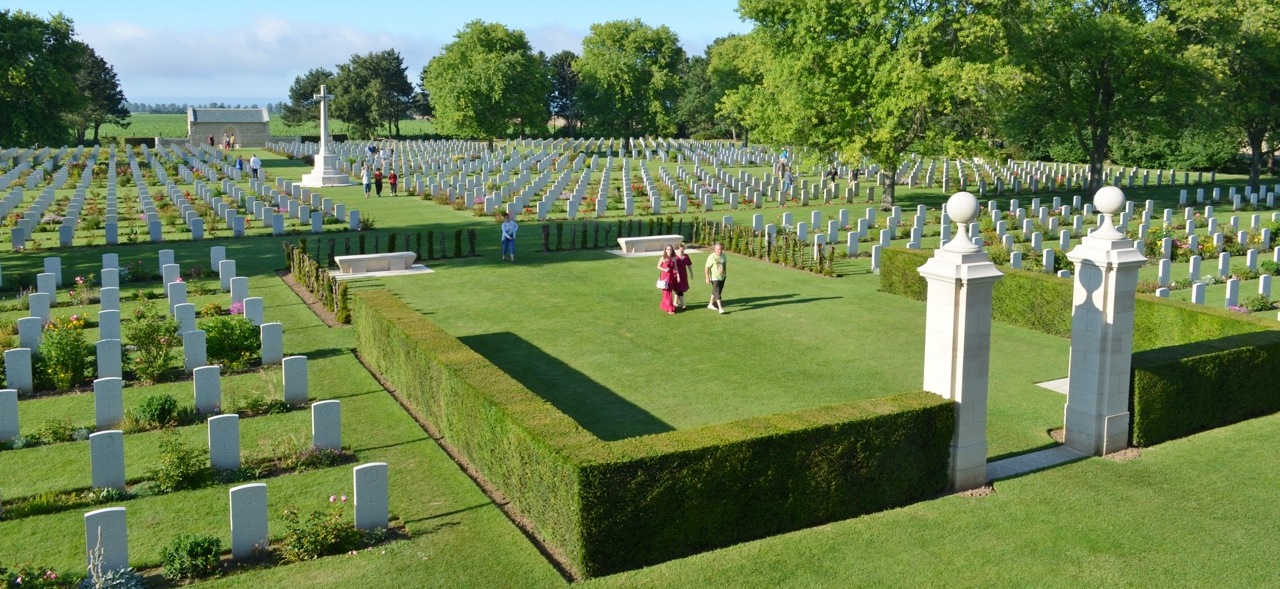
Canadian War Cemetery at Beny-sur-Mer, photo taken 2012. (R. Foot)
Historica Canada points out:
For years, Soviet leader Joseph Stalin had pressured the British and Americans to open another front in the war, by invading occupied France in the west. In the summer of 1943, the Allies agreed they were ready to launch the invasion the following year. American General Dwight Eisenhower was appointed supreme commander of an amphibious invasion of unprecedented size and scope, code-named Operation Overlord.
The Allies needed a French harbour from which to supply and sustain a successful invasion force. However, the disastrous 1942 raid on the French port of Dieppe, in which 3,369 Canadians were killed, wounded or captured, had convinced military planners that a seaborne assault against a well-defended port was folly.
In fact, much of the French side of the English Channel had been turned into what was called the "Atlantic Wall" -- mile after mile of concrete bunkers, machine gun nests, and other fortifications built by the Germans, overlooking beaches and tidal estuaries strewn with layers of barbed wire, anti-tank ditches, mines and other obstacles designed to obstruct an invading army. [...]
The Normandy campaign
finally ended on August 21, 1944,
with
Canadians playing an important role in closing the Falaise Gap
and assisting in the capture of approximately 150,000 German
soldiers. Now the pursuit of the enemy into the Netherlands,
Belgium and Germany could begin.
Today it is commonplace to
hear the Anglo-American and
European imperialists dismiss the feats of the Soviet peoples in
defeating Hitler, while claiming that it was the historic landing in
Normandy on June 6, 1944, which broke Hitler's back. This makes it
possible to claim that the United States played the decisive role in
saving the world from Hitlerism and describing current U.S. wars of
aggression and occupation as wars of liberation. All U.S.
military interventions since the landing at Normandy are said to
oppose dictatorships and tyrannies similar to Hitler's, thus
faithfully following in the tradition of the landing at Normandy.
This is not the case. The Red Army broke Hitler's back in Stalingrad and then chased his Nazi forces all the way back to Berlin where they were finally forced to surrender. This does not take away from the fact that the Second Front kept many Nazi troops engaged and away from the eastern front. German casualties (killed and wounded) in the Normandy campaign were estimated at more than 200,000, while the Allies suffered 209,000 casualties among the more than two million soldiers who landed in France following the D-Day landing. Among the Allied casualties were more than 18,700 Canadians, including more than 5,000 soldiers killed. Had the Anglo-American powers joined the anti-fascist front called for and established by the Soviet Union under Stalin, losses caused by the Hitlerite occupation of Europe and invasion of the Soviet Union would not have been so grave. Instead they were driven by an aim to make sure they, not the Soviets, would control the outcome of the war.
On this anniversary, Canadians pay deepest respects to
all the men and women who contributed to the defeat of the
Nazi-fascists and Japanese militarists in World War II. Their cause for
peace, democracy and freedom is not the same as the cause for which the
U.S. imperialists and big powers wage wars today. Today the fight to
secure peace, freedom and justice requires establishing anti-war
governments and making sure countries are zones for peace, not war.
(With files from HBRC archives, Historica Canada)
Normandy Landing and the Re-Writing of History
In an article published on the 70th anniversary of
D-Day,
military historian Benoît Lemay, of the Royal Military
College of Kingston, Ontario pointed out, "There are many
misconceptions about the Normandy landing. It is believed to have
enabled the Allies to win the Second World War. A more nuanced view is
required. In fact, in June 1944, Germany had already lost. The landing
only served to accelerate the end of the war. It was the Russians on
the Eastern Front who did most of the work. For propaganda reasons,
during the Cold War years that followed, the West would try to minimize
the Soviet effort. It would be conveyed that it was the Allies who did
most of the work."[1]
Lemay explained the motives behind the landing: "In reality, the Allies landed in France not only to defeat the Germans, but also to ensure that Western Europe did not fall under the Soviet yoke. There was a political aspect and economic interests."[2]
During their meeting in Tehran at the end of November 1943, the three leaders -- Stalin, Churchill and Roosevelt -- agreed a Second Front would be opened. It was the landing in Normandy on June 6, 1944 that opened this Second Front, in the military context created by the Red Army, where Germany had already lost the war because of it and now had to fight on two sides.
According to the invasion plans, Caen was to be liberated on the evening of June 6 but the fighting was so fierce, it was only finally liberated 40 days later on July 17. The French historian Claude Quétel explains, "On June 22, 1944, a little more than a fortnight after the Normandy landings -- and three years to the day after the invasion of the Soviet Union by the Nazi armies -- Stalin attacked the Hitlerite troops from his side. The objective: to hold down a maximum of German divisions in the East to facilitate the progression of the Allies to the West. Stalin went all out. For this operation, no less than 166 divisions, 1,300,000 men, 5,000 aircraft, 2,700 tanks were mobilized. The main front is not the one thought to be in Normandy: it was in the East"[3]
However, Quétel writes, "This Soviet offensive, the largest since the beginning of the war, has often been obscured in the Western world because of the Cold War and rewriting of history."[4]
Quétel tells us: "The Russian victories in
Stalingrad
and especially Kursk changed the game. The major risk for the
Anglo-Saxons was no longer to see Stalin sign a separate peace
with Hitler, but to see him win the final victory alone! It
became urgent to discuss strategy [...] with the Soviets. The
Tehran Conference brought Churchill, Roosevelt and Stalin
together for the first time in this war."

Joseph Stalin, Franklin D. Roosevelt and Winston Churchill meet at the
Tehran Conference,
November 28 to December 1, 1943.
Historian Antony Beevor summarized what happened a few days before the landing in Normandy: "Roosevelt wanted to remind his subordinates that the Allies were not liberating France to install General de Gaulle in power." The U.S goal was to "impose a military government until elections were held," which would take some time. This is why Roosevelt "insisted on creating an occupation currency." The disagreements were serious in Roosevelt's entourage, and "Churchill did his best to persuade him that they had to work with de Gaulle."[5] Roosevelt yielded. De Gaulle was then made aware of the landing that had been planned without his knowledge in his own country. He learned about it on June 4, the day before the landing was originally scheduled to take place; it was postponed a day due to bad weather. The "occupation" of part of Europe would take place anyway, but without a U.S. "military government" and its "occupation currency" in France.
In an interview, Beevor expressed the concern of the Anglo-American Allies with regard to a surrender of Germany only to the Soviet Union if the disembarkation of their troops was delayed:
Eisenhower's decision to launch the operations on June 6, despite warnings from weather specialists, after a first postponement on the 5th, was not only a courageous decision, it was a historic stance. If he had said, "we postpone the date," the next possible window was exactly in the middle of the great storm of June 19, one of the worst in the [English] Channel. He would therefore have again had to suspend operations probably until the spring of 1945. This would have had unimaginable consequences, not only for the secrecy of the operations and for the maintenance for a very long time of the armada assembled in Great Britain, but, especially during this period, the Red Army would not only have arrived in Berlin, but would have had time to cross the Rhine and go, why not? all the way to La Rochelle [...] You can imagine the scene![6]
In June 2014, during the commemoration of the 70th anniversary of the landing in France, then-President François Hollande said that the "fate of humanity was played out on June 6, 1944." He said that he "wanted this ceremony to be useful, not just for the memory, not just for the evocation of the sacrifice, but also because peace is threatened in the world today." He then invoked D-Day as justification for France's violation of rights at home and aggression and war abroad, saying, "It is because France itself has experienced barbarity that it is doing its duty to preserve peace everywhere, within the borders of Europe, as in Africa," he said.[7]
German Chancellor Angela Merkel likewise declared at
that commemoration: "This June 6, 1944 [...] was the beginning of the
liberation" since by
means of this landing, it was the "Allies who launched this
liberation movement to permanently free us from Nazism."
Then came U.S. President Barack Obama who said that "it
was here, on these shores, that the tide was turned in that common
struggle for freedom." In his words, Normandy became "this tiny sliver
of sand upon which hung more than the fate of a war, but rather the
course of human history."[8]
In 2009, Obama said in his speech in France to mark the 65th
anniversary of
D-Day, "Had the Allies failed here, Hitler's
occupation of this continent might have continued indefinitely. [...]
Victory here secured a foothold in France [...] it made possible the
achievements that followed the liberation of Europe: the Marshall Plan,
the NATO alliance, the shared prosperity and security that flowed from
each."[9]
In a statement issued by the Prime Minister's Office on June 4, 2014, then Prime Minister Stephen Harper echoed these falsities, saying that Normandy was "a turning point in the world’s history."[10] Harper was no less adamant to equate the landing at Normandy with current U.S.-led wars of aggression and occupation. Canadian soldiers buried in France "are a poignant reminder that our country will always stand up for what is good, what is right and what is just. It was as true then as it has been in the years since the Second World War in places like Korea, Afghanistan and Libya," he said.
The decisive role of the Soviet Union in the military
defeat of fascist
Germany was accepted by everyone at the time, and admitted before
Hitler's
suicide and the end of the war. In fact, it was admitted even before
the landing at Normandy by the President of the United States, Franklin
D. Roosevelt, who honoured the city of Stalingrad on May 17, 1944, 20
days before the Normandy landing, declaring:
In the name of the people of the United States of America, I present this scroll to the City of Stalingrad to commemorate our admiration for its gallant defenders whose courage, fortitude, and devotion during the siege of September 13, 1942 to January 31, 1943 will inspire forever the hearts of all free people. Their glorious victory stemmed the tide of invasion and marked the turning point in the war of the Allied Nations against the forces of aggression. [11]

Scroll presented by Roosevelt to city of Stalingrad, May 17, 1944.
|
|
The "turning point in the war" in January 1943 was
followed seven months later by the victory in Kursk in August 1943,
which also made history. In the report Stalin presented in Moscow
on November 26, 1943, on the occasion of the 26th anniversary of the
victory of the October socialist revolution, he said, "If the
Battle of Stalingrad announced the decline of the German fascist army,
the battle of Kursk placed it in front of a catastrophe."
"The cause of German fascism is lost, and the sanguinary 'New Order' it
has established is approaching collapse. [...] The time is long past
when the Hitlerite clique made a great noise about the Germans winning
world domination. Now as is known, the Germans have other matters than
world domination to worry about. They have to think about keeping body
and soul together."[12]
In the May 1, 1944 issue of Pravda,
published
36 days before the
landing at Normandy, Stalin wrote: "Under the blows of the Red
Army the bloc of Fascist States is cracking and falling to pieces.
[...] These underlings of Hitler, whose countries have been occupied,
or are being occupied, by the Germans, cannot now fail to see that
Germany has lost the war."[13]
Stalin emphasizes: "As a result of the successful offensive, the Red
Army has emerged on our State frontiers on a stretch of over 400
kilometres (250 miles), and liberated more than three-quarters of
occupied Soviet land from the German-fascist yoke. The aim now is to
clear the whole of our land from the fascist invaders and to
re-establish the State frontiers of the Soviet Union along the entire
line from the Black Sea to the Barents Sea."[14]
Even though one quarter of the country remained to be liberated 36 days
before the landing in Normandy, Stalin notes that already "the Red Army
has emerged on our State frontiers with Rumania and Czechoslovakia and
now continues battering the enemy troops on the territory of Rumania.
[...] But our tasks cannot be confined to the expulsion of the enemy
troops from our Motherland. [...] To rid our country and the countries
allied with us from the danger of enslavement, the wounded German beast
must be pursued close on its heels and finished off in its own lair."[15]
In short, the invaded Soviet motherland liberated herself and began to
liberate others. Initiated in Stalingrad, the march to defeat the Nazis
now continued beyond the national borders all the way to Berlin. For
the
Anglo-American imperialists to claim they defeated Hitler with
the invasion of Normandy does a great disservice to the anti-fascist
forces in Britain, the U.S., Canada and the European countries who
fought heroically to do their part in the war. It is done to claim that
wars of aggression and occupation today are for democracy, peace and
freedom and this dishonours the anti-fascist contribution of the
soldiers who fought in the Second Front even more.
Notes
1. La Presse, June 6, 2014. Translated from
French
by TML.
2. Ibid.
3. Le Monde-Hors série: 1944/Débarquements, résistances, libérations, May-July 2014, La bataille de Normandie en neufs points, pp.20-23. Quote translated from French by TML.
4. Ibid.
5. Antony Beevor, The Second World War, Little, Brown and Company, New York, 2012.
6. Antony Beevor, "Ce n'était pas gagné d'avance," Le Point, June 5, 2014, pp.58-62. Quote translated from French by TML.
7. Le Monde, June 6, 2014. Translated from French by TML.
8. Barack Obama, Speech Commemorating the 70th Anniversary of D-Day, Normandy, June 6, 2014.
9. Speech by Barack Obama at the American Cemetery at
Normandy, June 6, 2009.
10. La Presse, op. cit.
11. J.V. Stalin, Correspondence
with
Franklin
D.
Roosevelt
and
Harry
S. Truman Vol. 2 (1941 -
1945), footnote no. 67.
12. J.V. Stalin, Speech at Celebration Meeting of the Moscow Soviet of
Working People's Deputies and Moscow Party and Public Organizations,
November 6, 1943, Collected Works,
Vol. 15.
13. Order of the Day, No. 70, May 1, 1944, op. cit.
14. Ibid.
15. J.V. Stalin, Speech Delivered at a Meeting of Voters of the Stalin
Electoral District, Moscow. February 9, 1946.
(Translated from the original French and abridged for publication by TML Weekly on the 74th anniversary of D-Day.)
Website: www.cpcml.ca Email: editor@cpcml.ca
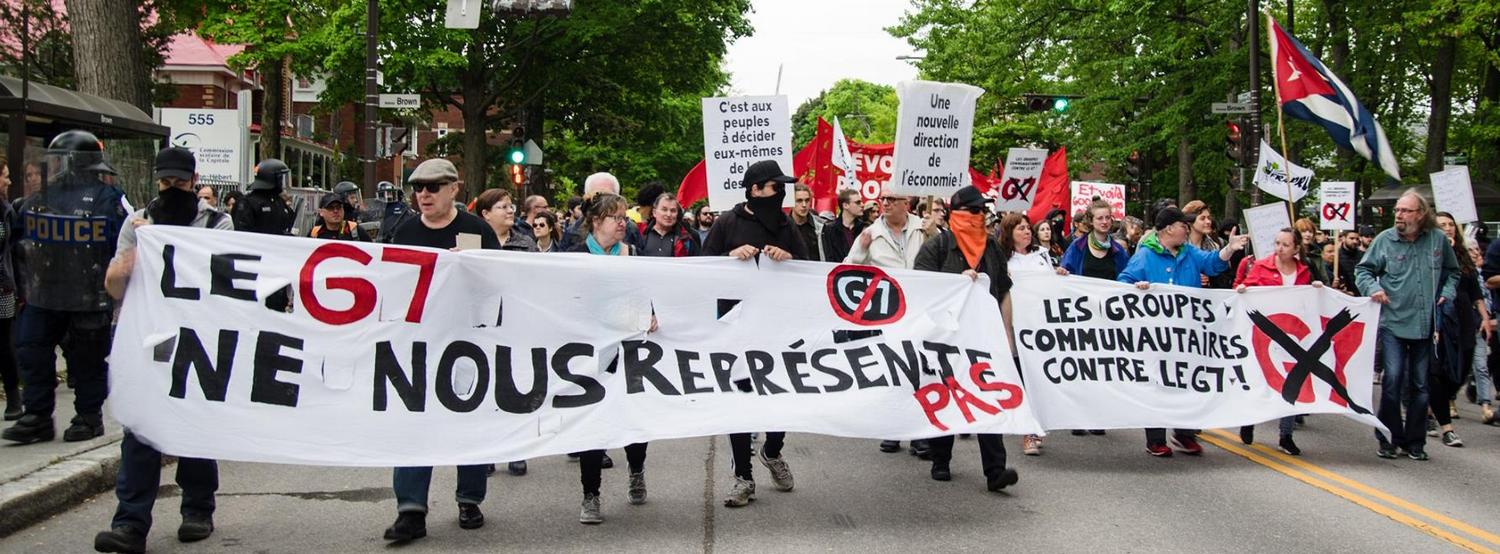

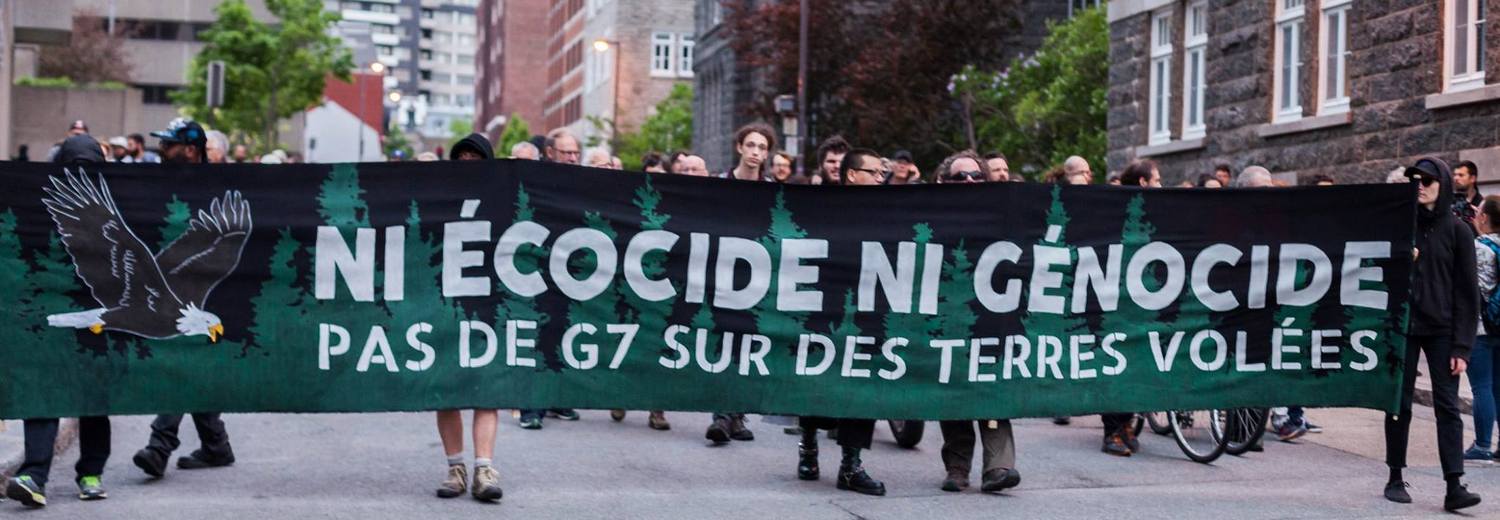

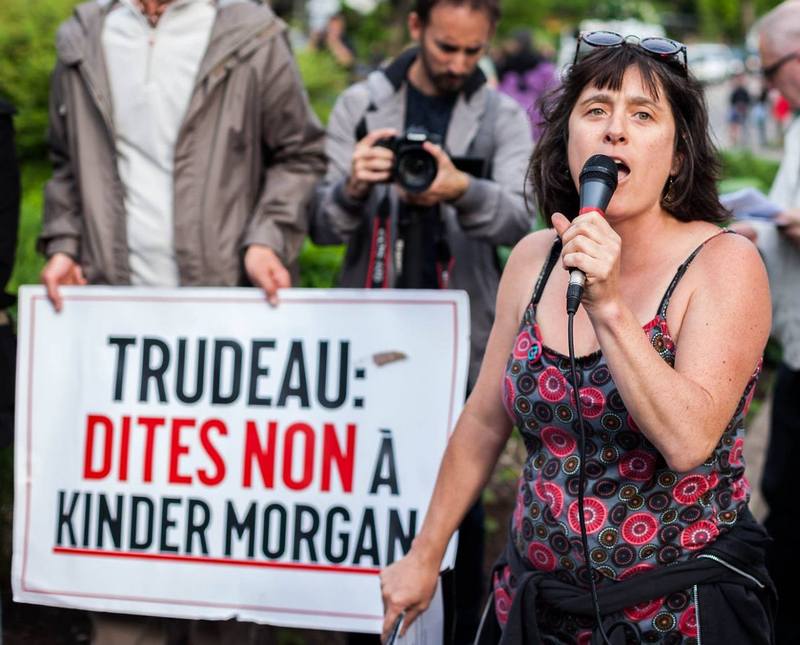
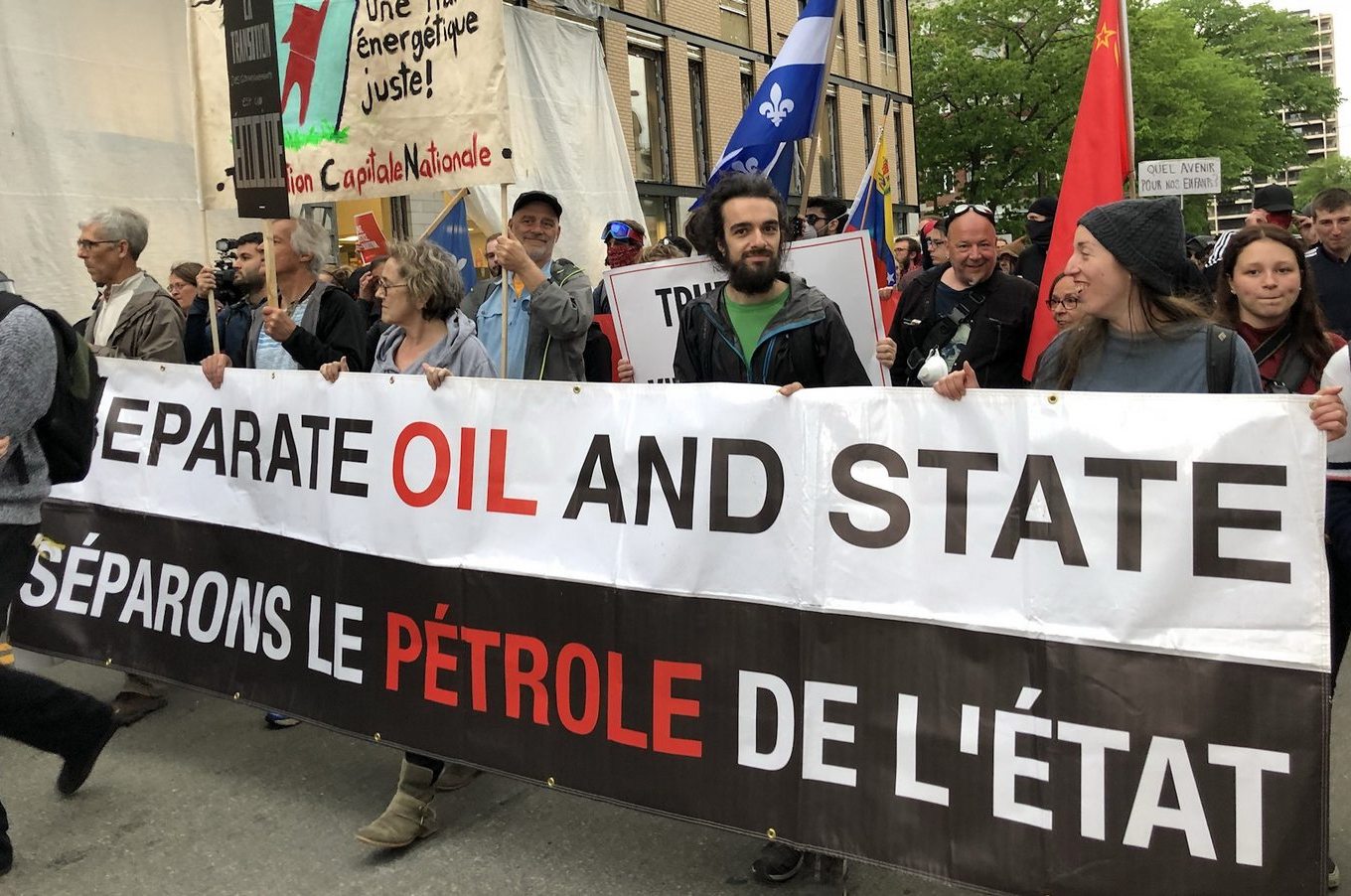

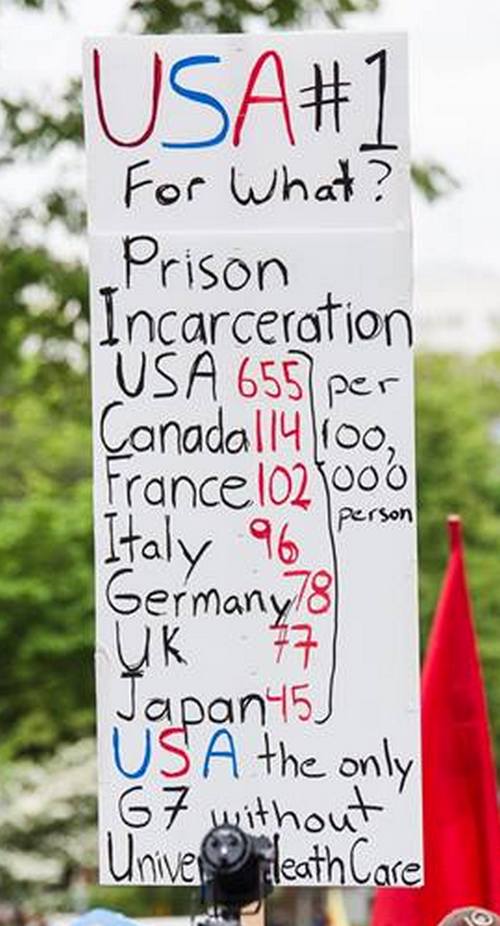
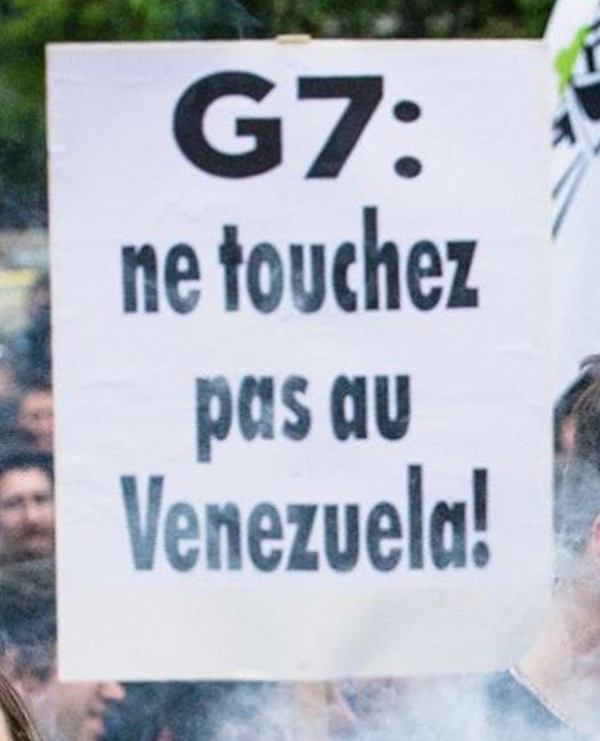



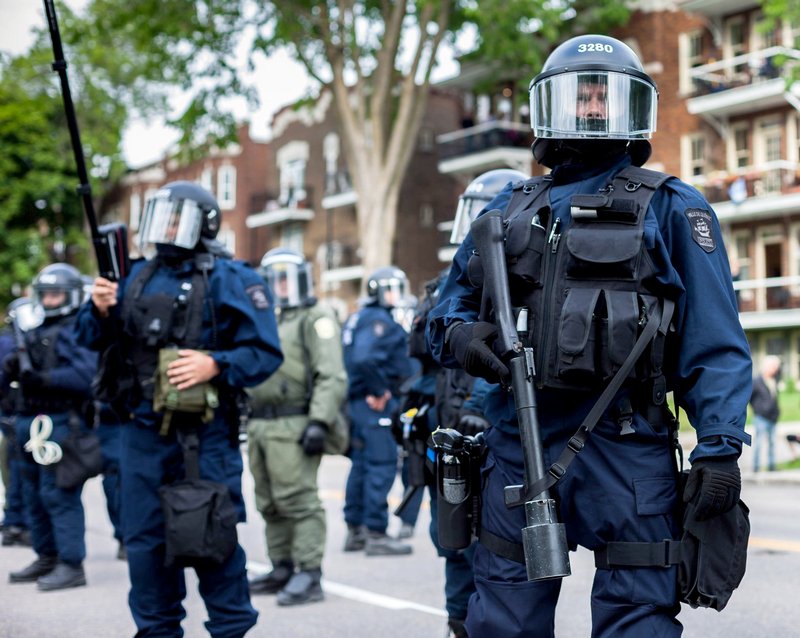
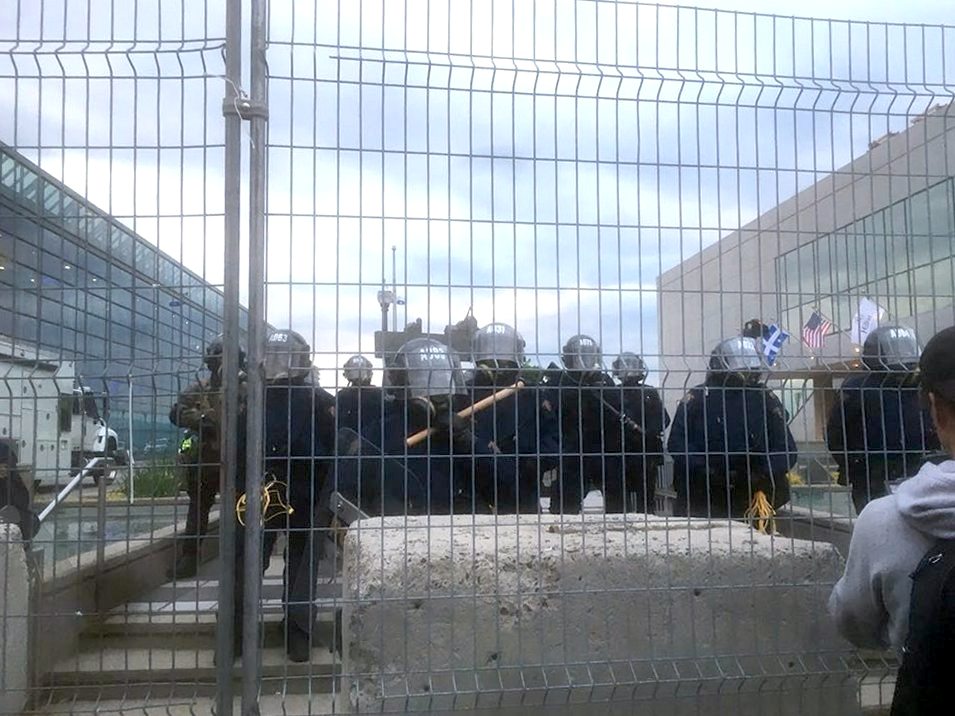


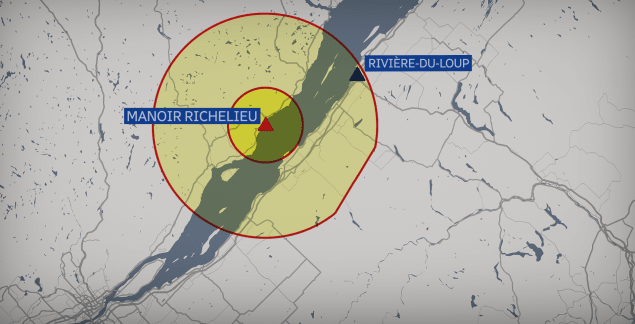
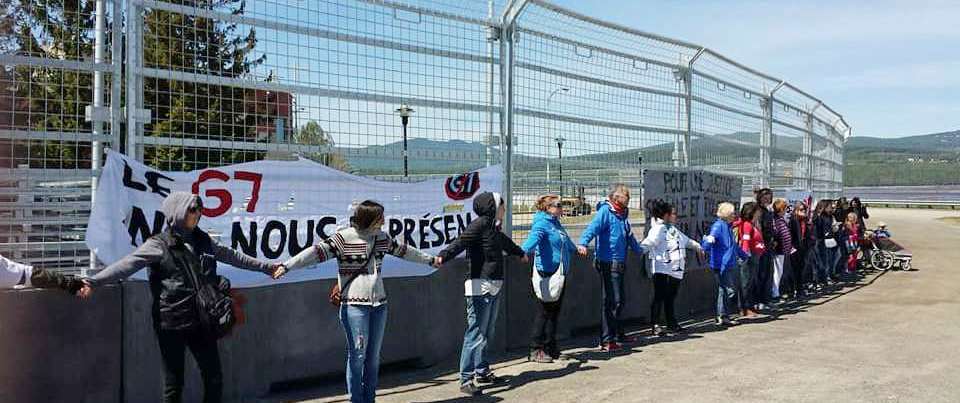
 During the action, citizens
expressed their anger at the
occupation of their region by heads of state and their police
powers. They noted, in particular, that authorization permits
have been required since Monday, June 4 for 800 residents and
workers from the community's population of 8,000; that farmers are
prohibited from
spreading fertilizer during the Summit, and the all-pervasive police
presence in their streets, waterways and air space.
During the action, citizens
expressed their anger at the
occupation of their region by heads of state and their police
powers. They noted, in particular, that authorization permits
have been required since Monday, June 4 for 800 residents and
workers from the community's population of 8,000; that farmers are
prohibited from
spreading fertilizer during the Summit, and the all-pervasive police
presence in their streets, waterways and air space.

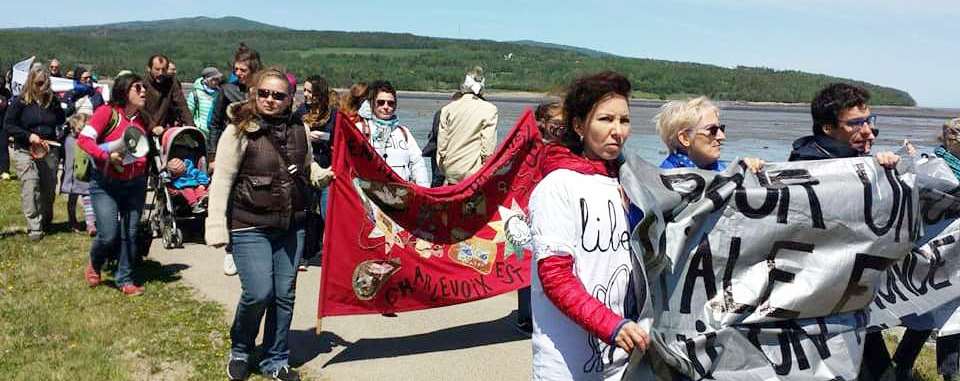
 First, anything is knowable
following scientific
investigation, discussion and analysis, including the actions of
humans. Humans act according to the social conditions, the level
of the productive forces, their outlook, interests, and the
historical crib into which they are born. Trump acts according to his
social conditions, outlook, private interests, and imperialist
historical crib. His actions appear irrational with regard to
trade because imperialist international trade has descended into
anarchy and chaos, features of irrationality. International trade
is captured within a contradiction. Its present condition demands
cooperation but cut-throat competition between private interests to
dominate the markets and sources of raw materials prevails. However,
within the
irrationality of the conditions, and their descent into chaos and
crisis, meaning can be found, in particular the necessity for
change and how to bring about that change.
First, anything is knowable
following scientific
investigation, discussion and analysis, including the actions of
humans. Humans act according to the social conditions, the level
of the productive forces, their outlook, interests, and the
historical crib into which they are born. Trump acts according to his
social conditions, outlook, private interests, and imperialist
historical crib. His actions appear irrational with regard to
trade because imperialist international trade has descended into
anarchy and chaos, features of irrationality. International trade
is captured within a contradiction. Its present condition demands
cooperation but cut-throat competition between private interests to
dominate the markets and sources of raw materials prevails. However,
within the
irrationality of the conditions, and their descent into chaos and
crisis, meaning can be found, in particular the necessity for
change and how to bring about that change.
 Nothing wrong in itself can
be determined from having an
aluminum sector far beyond the needs of Canadians and geared to
exports. But who made this decision to invest in this way,
including hydroelectric production, to serve the war economy of
the United States, and the reasoning of those in control lie
hidden behind a wall of secrecy of the global cartels. Not even
Canadian managers are in control let alone working people. The
decisions are made elsewhere in secret conclaves of the
oligarchs. For example, the local managers at the Rio Tinto/Alcoa
aluminum smelter in Bécancour, Quebec say they have no mandate
or
permission from those in control to negotiate and settle with
their locked out workers and Quebec government. The supranational
control and decisions of the oligarchs have surpassed even the
mysteries of state, as the situation degenerates into global
anarchy, recurring crises, constant war and irrationality.
Nothing wrong in itself can
be determined from having an
aluminum sector far beyond the needs of Canadians and geared to
exports. But who made this decision to invest in this way,
including hydroelectric production, to serve the war economy of
the United States, and the reasoning of those in control lie
hidden behind a wall of secrecy of the global cartels. Not even
Canadian managers are in control let alone working people. The
decisions are made elsewhere in secret conclaves of the
oligarchs. For example, the local managers at the Rio Tinto/Alcoa
aluminum smelter in Bécancour, Quebec say they have no mandate
or
permission from those in control to negotiate and settle with
their locked out workers and Quebec government. The supranational
control and decisions of the oligarchs have surpassed even the
mysteries of state, as the situation degenerates into global
anarchy, recurring crises, constant war and irrationality.

 Broad opposition to the
Trudeau Liberal government's
purchase of Kinder Morgan's Trans Mountain Pipeline expansion
project continues across the country. On June 4, more than 100
protests were held from coast to coast at the constituency offices of
Members of
Parliament.
Broad opposition to the
Trudeau Liberal government's
purchase of Kinder Morgan's Trans Mountain Pipeline expansion
project continues across the country. On June 4, more than 100
protests were held from coast to coast at the constituency offices of
Members of
Parliament. 
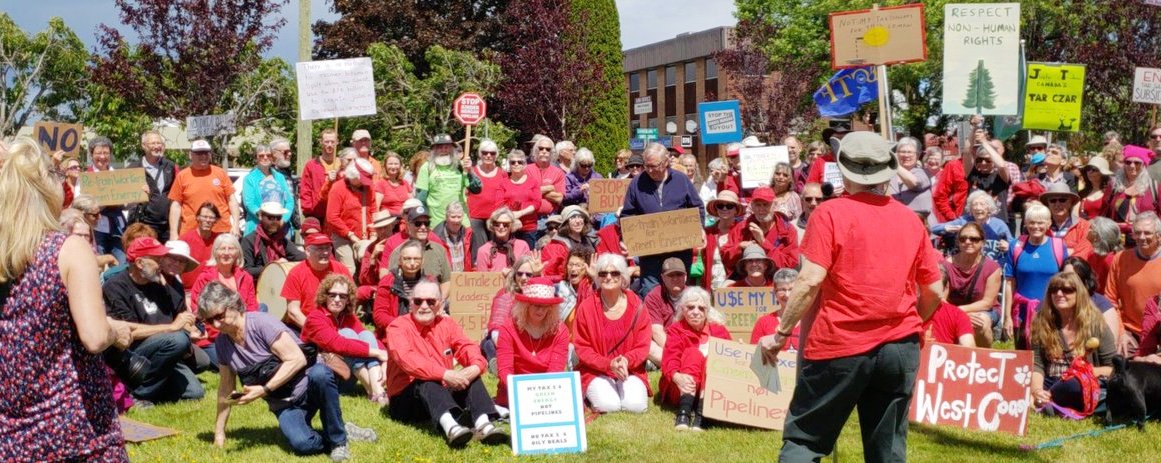
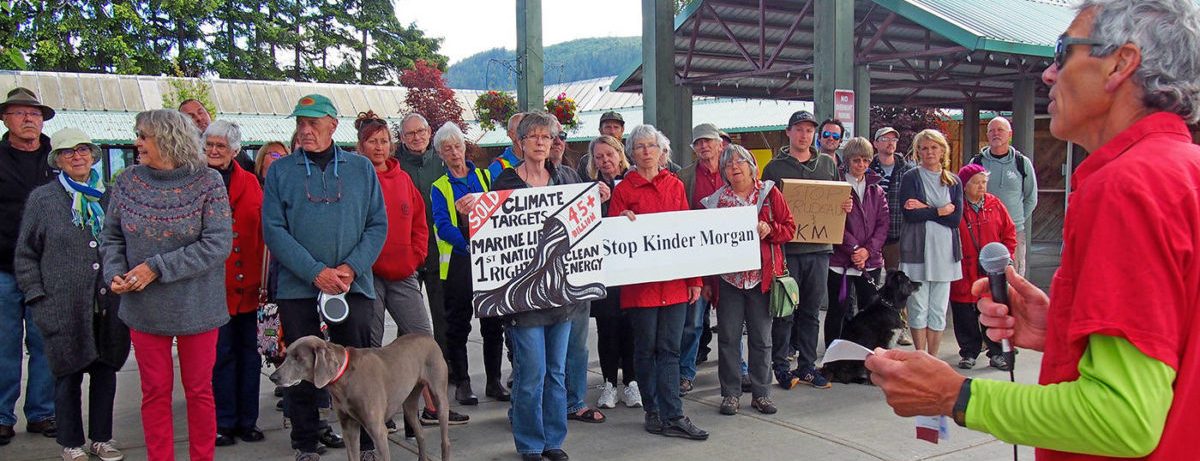
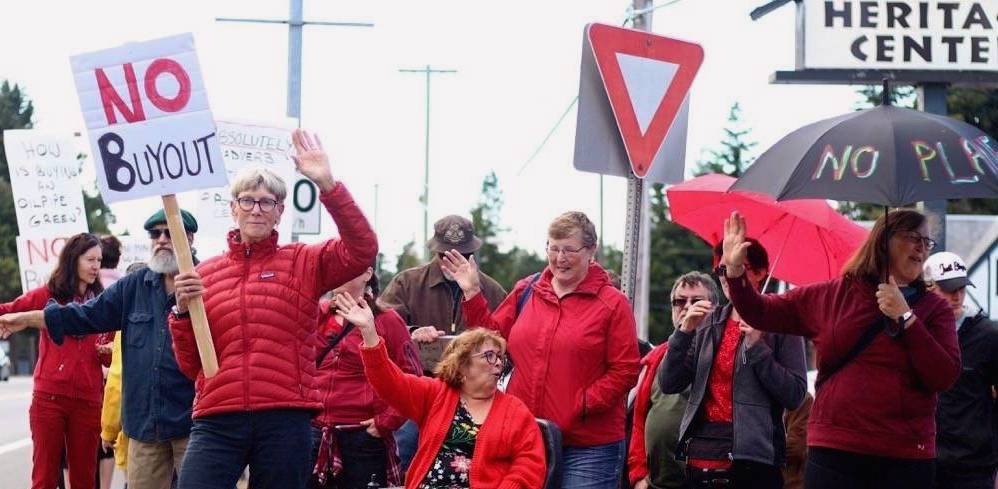

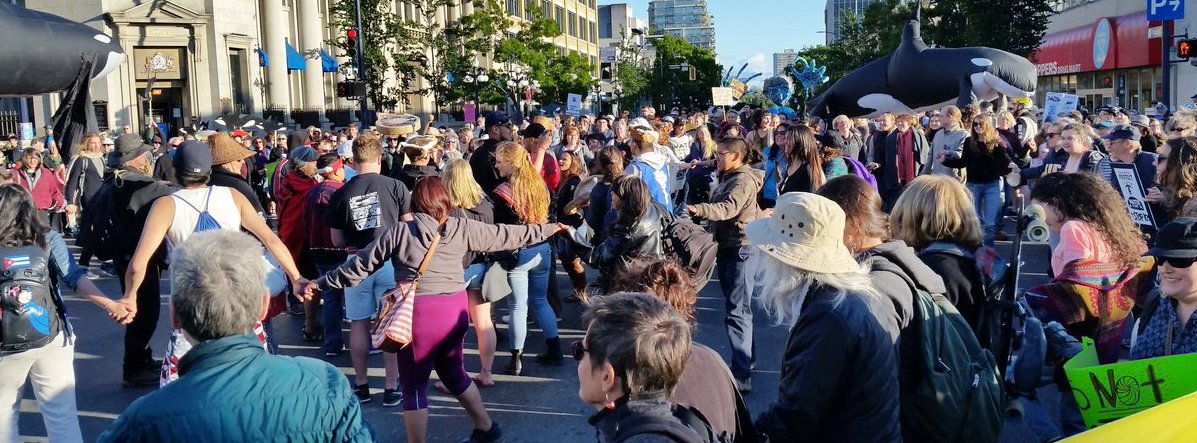
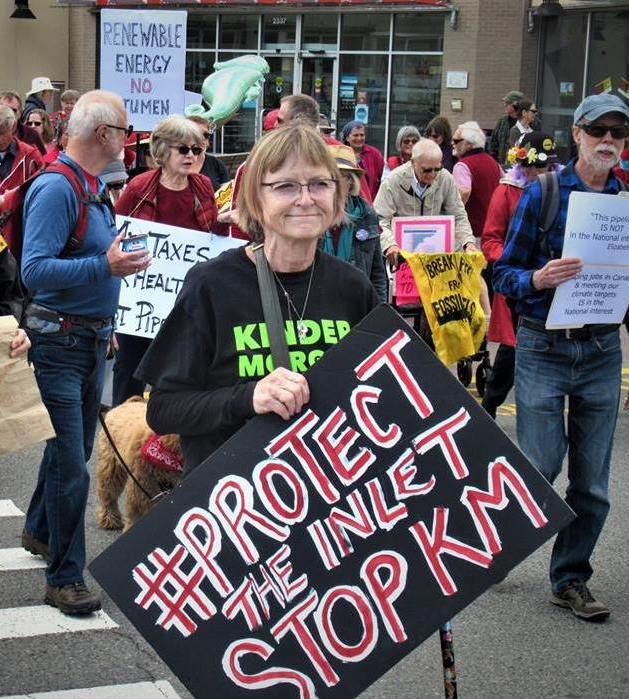
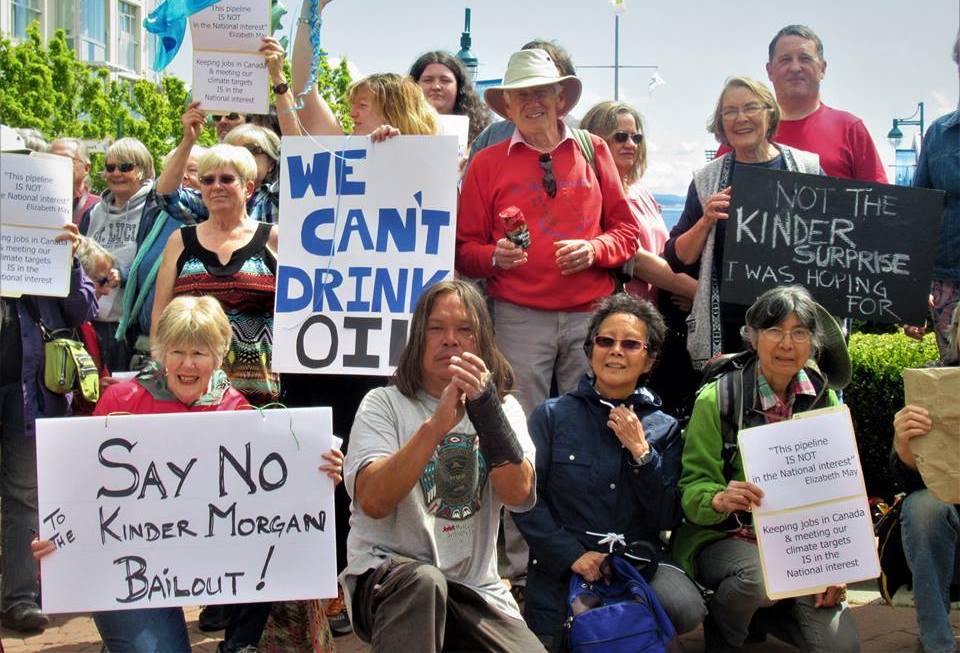
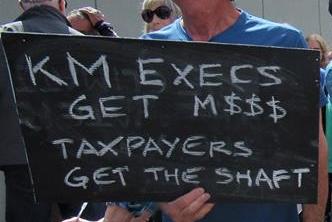
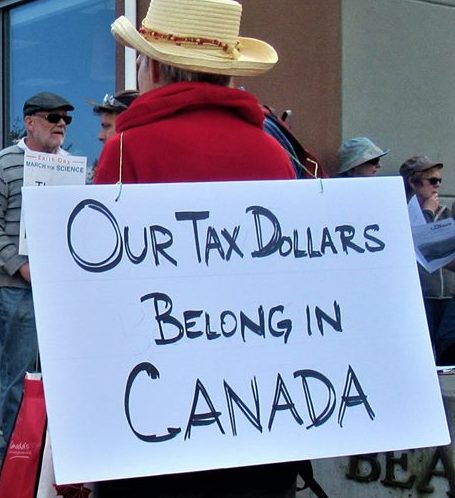



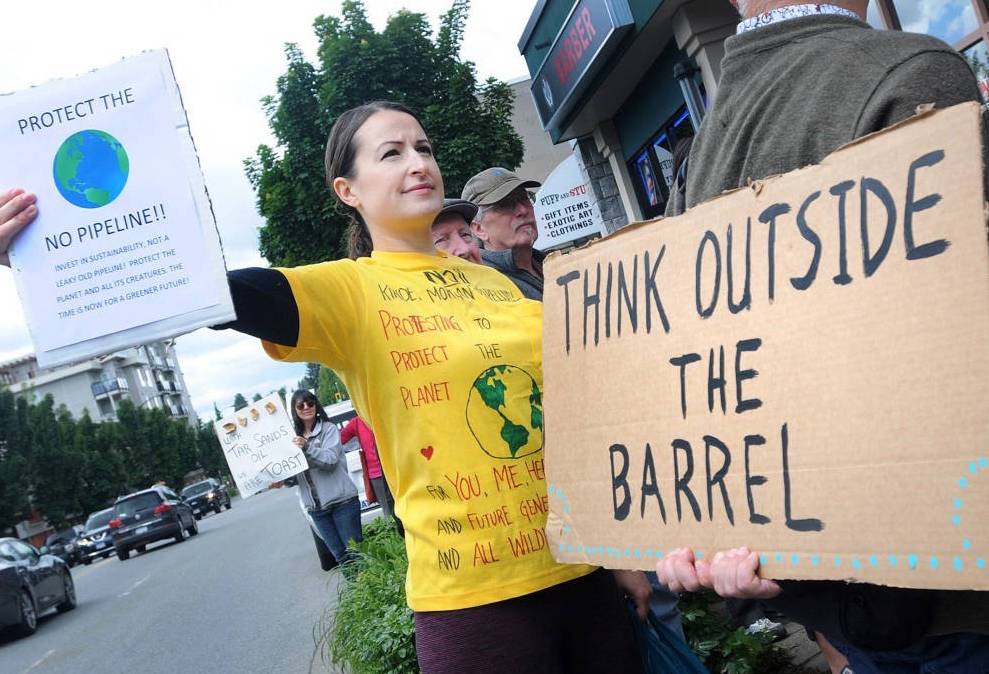

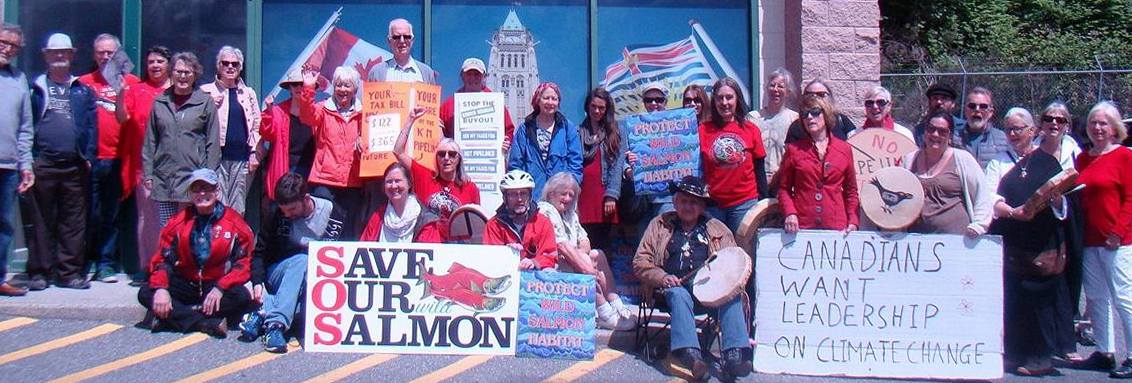

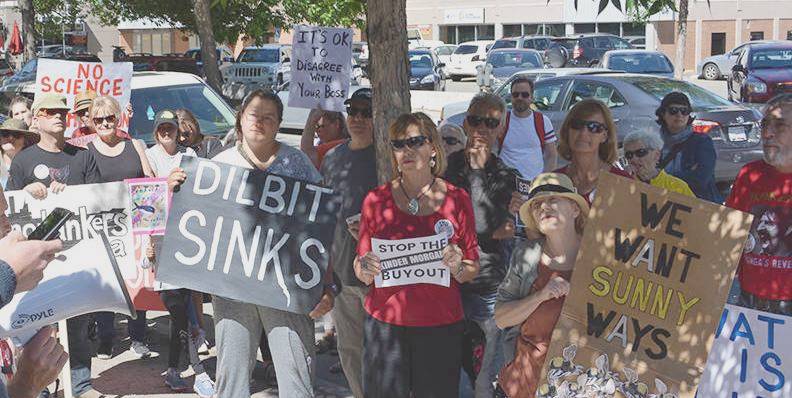


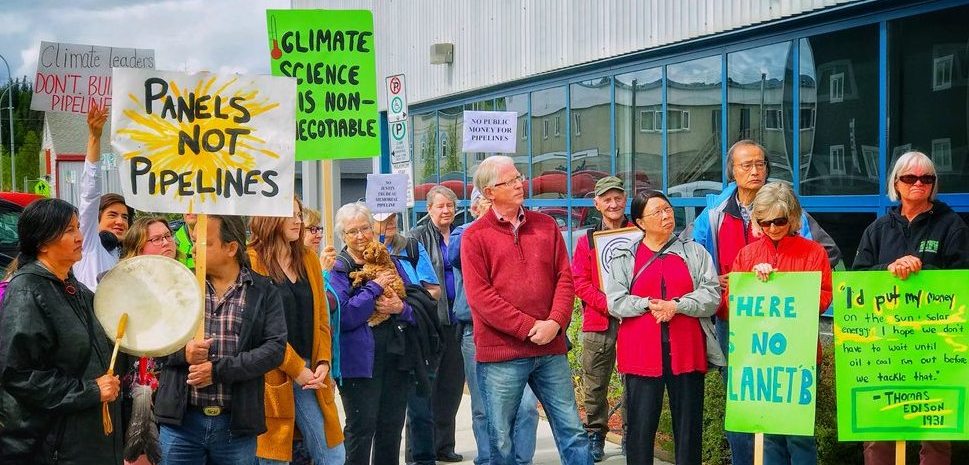
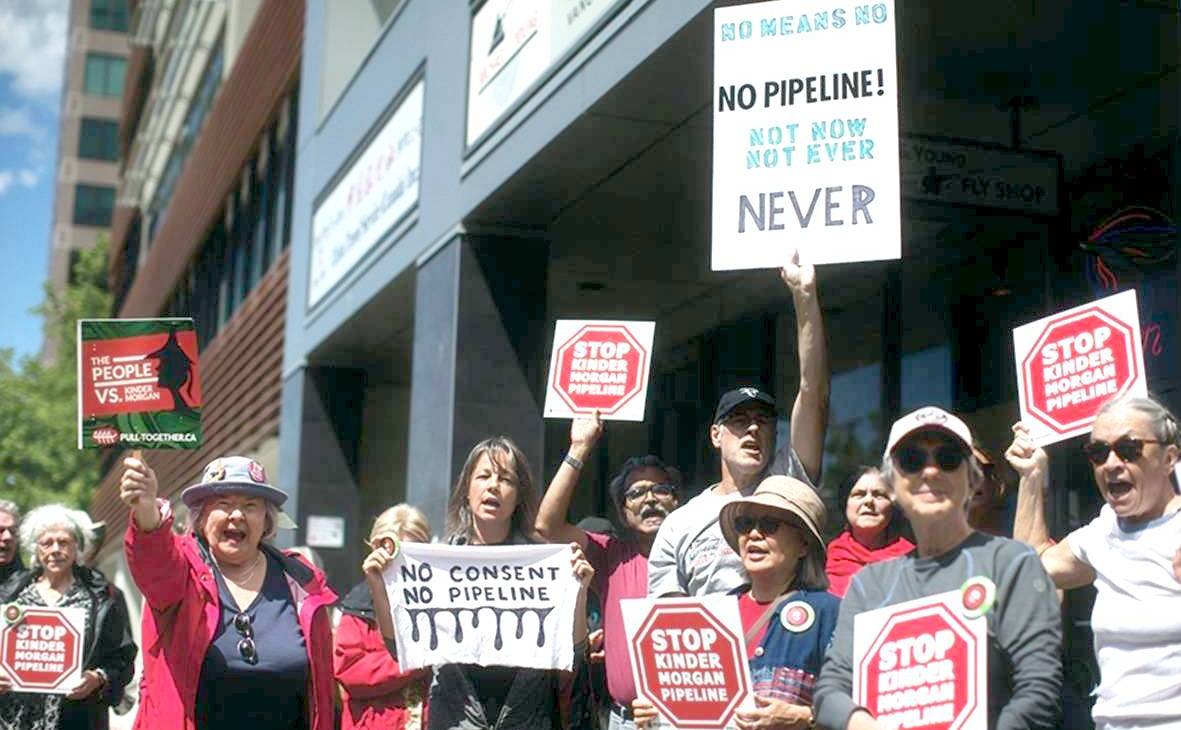


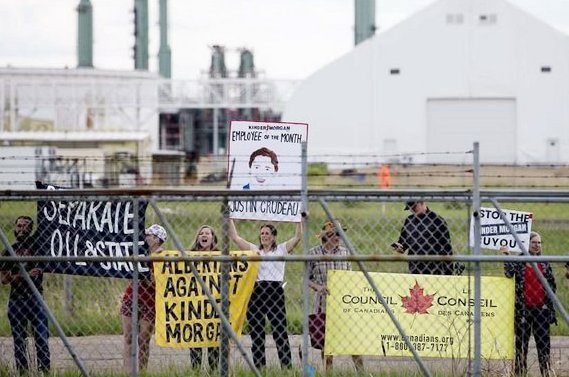



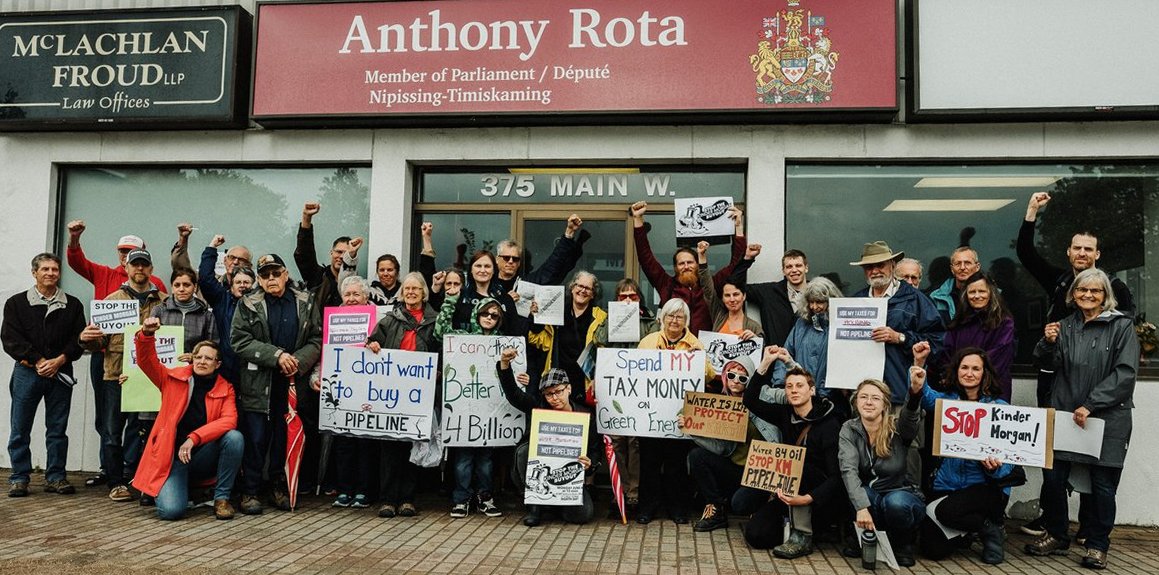
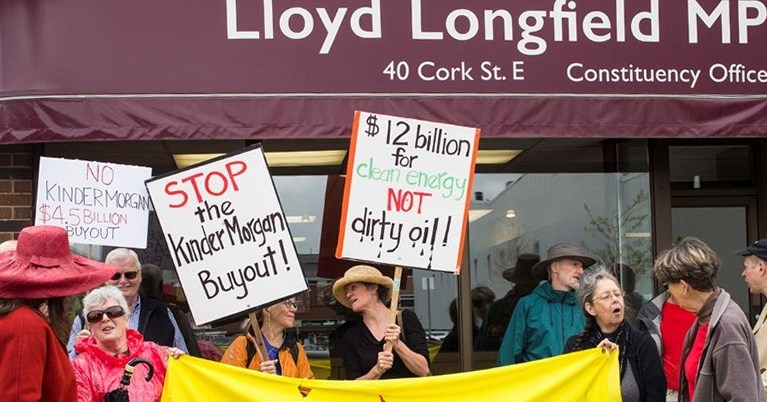

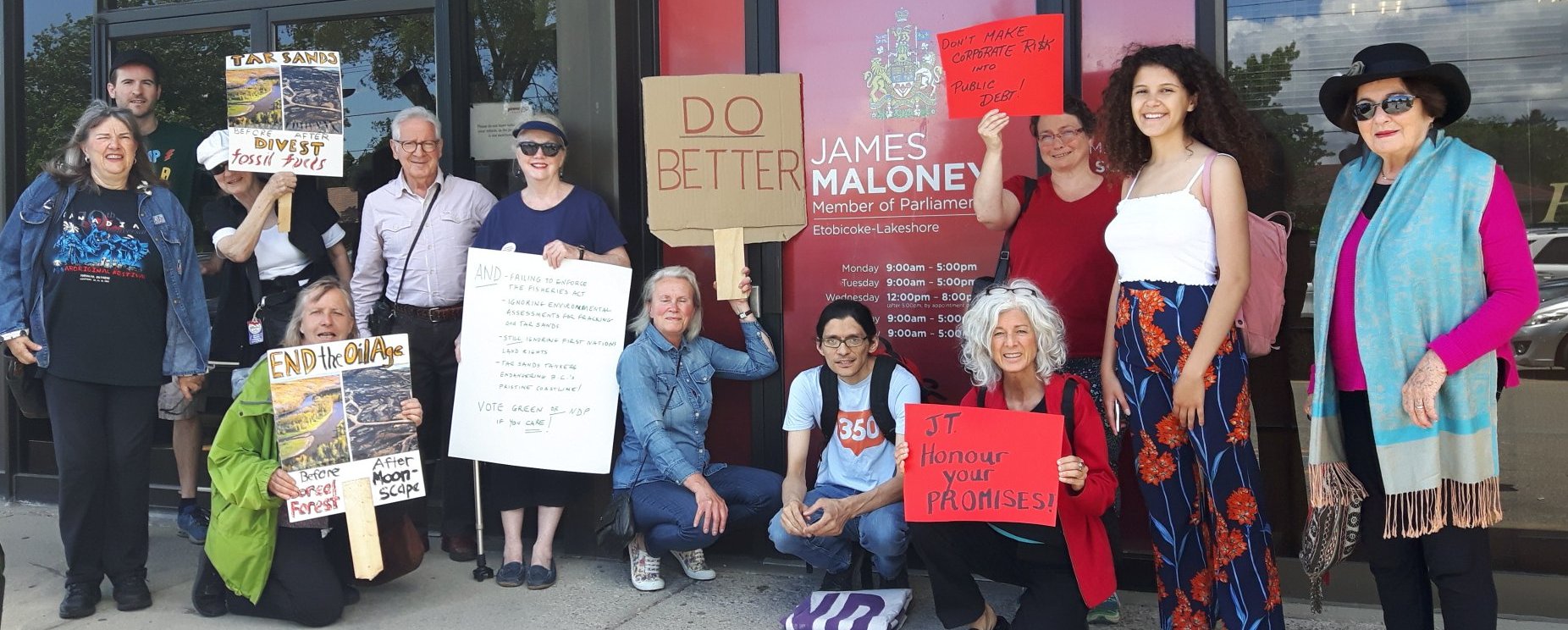

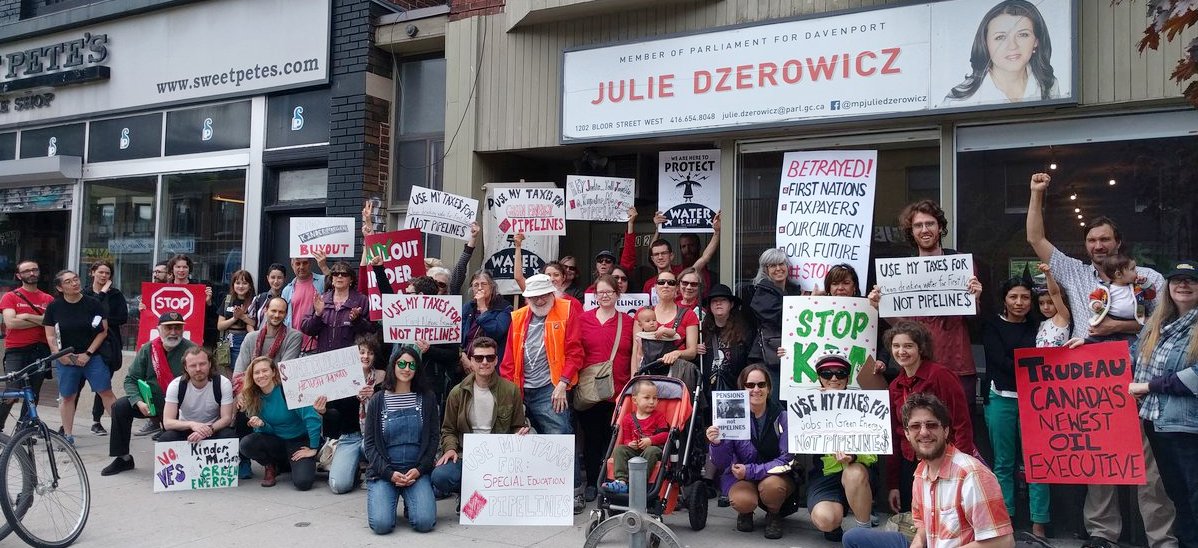

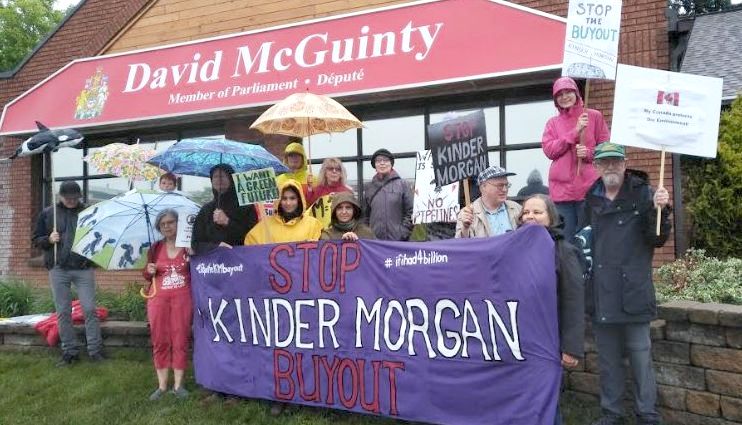




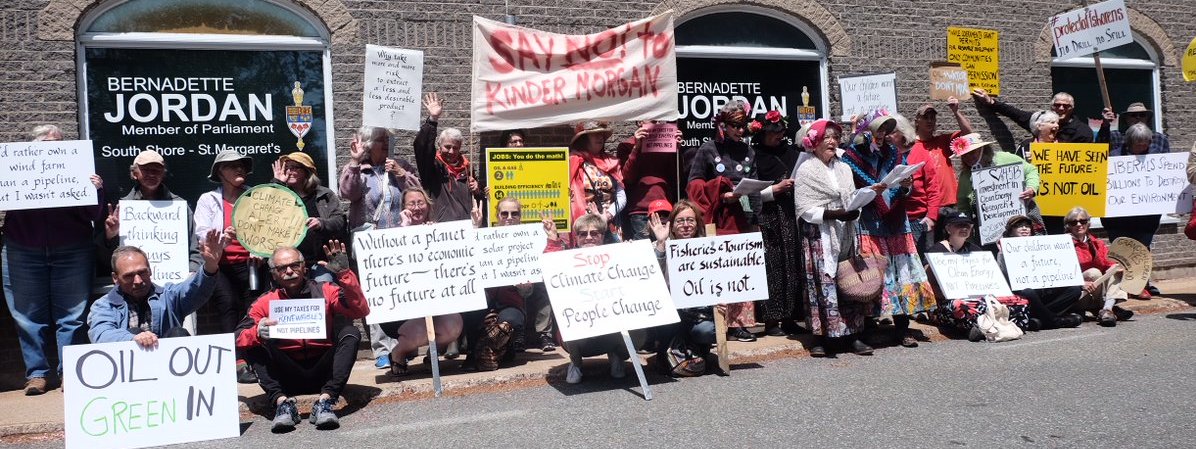

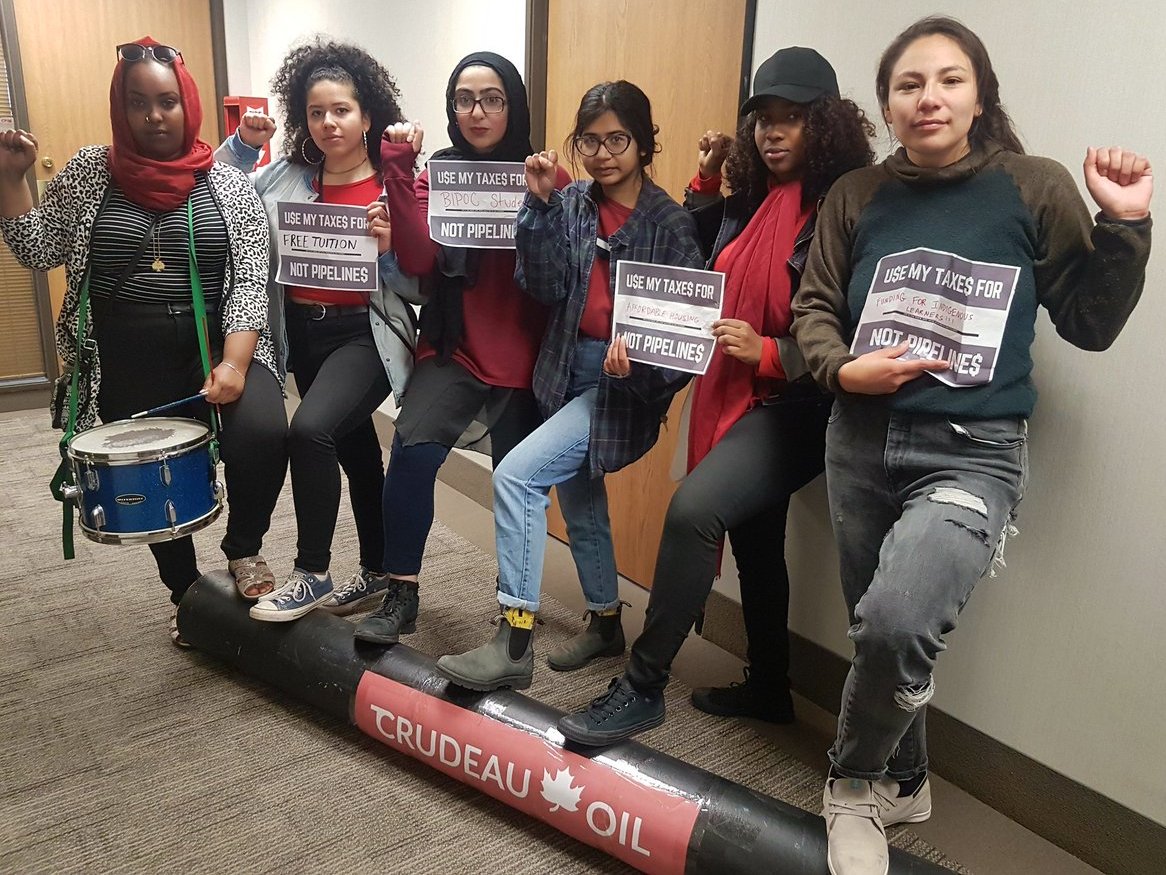

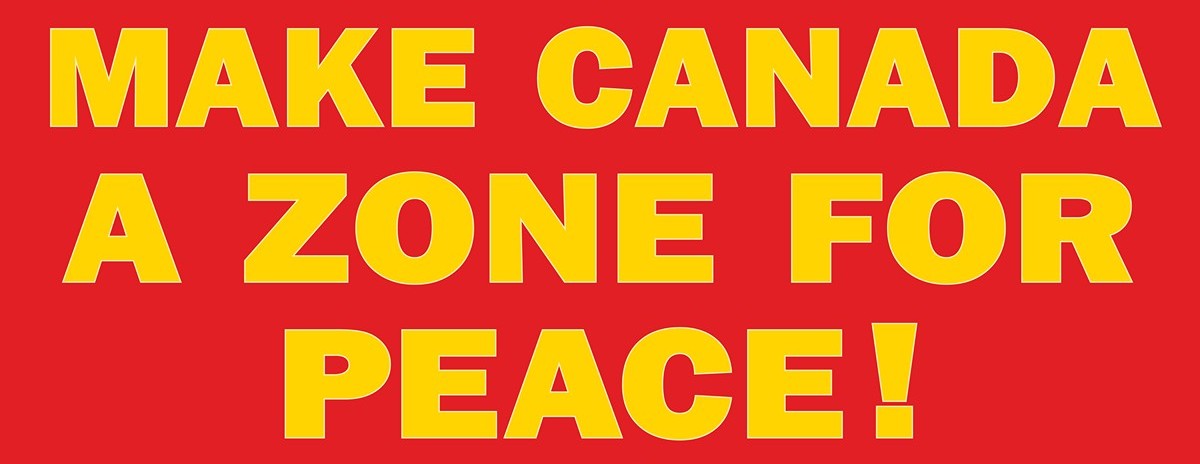

 Analysts say that the NATO
Readiness Initiative will increase
the strength of the NATO response force from 20,000 to about
50,000 by creating a pool of 30,000 troops with organic aviation
and ships ready to be operationally deployed within 30 days. The
initiative belongs to the U.S. with Germany to take the lead.
Analysts say that the NATO
Readiness Initiative will increase
the strength of the NATO response force from 20,000 to about
50,000 by creating a pool of 30,000 troops with organic aviation
and ships ready to be operationally deployed within 30 days. The
initiative belongs to the U.S. with Germany to take the lead. Reports on the war
preparations present them as
necessary to contend with threats from enemies and seek to
overwhelm us with accounts of the firing and destructive power
being deployed and the interoperability of the armed forces of U.S.
"allies." However, despite their destructive power and the suffering
they
cause, weapons are never decisive in war; people are decisive. It is
criminal to prepare war in Europe which suffered so much
from the first two great wars, World War I and World War II,
which saw many Canadian losses as well. Canadians should reject
Canada's participation in these war games and any attempts to
justify them based on hysteria about enemies and that war
preparations are necessary to defend the national interest.
Already Canadian forces have been integrated into those of the
United States. To instigate conflict in the name of peace is a
crime against the peace as defined by the Nuremburg Tribunal.
Reports on the war
preparations present them as
necessary to contend with threats from enemies and seek to
overwhelm us with accounts of the firing and destructive power
being deployed and the interoperability of the armed forces of U.S.
"allies." However, despite their destructive power and the suffering
they
cause, weapons are never decisive in war; people are decisive. It is
criminal to prepare war in Europe which suffered so much
from the first two great wars, World War I and World War II,
which saw many Canadian losses as well. Canadians should reject
Canada's participation in these war games and any attempts to
justify them based on hysteria about enemies and that war
preparations are necessary to defend the national interest.
Already Canadian forces have been integrated into those of the
United States. To instigate conflict in the name of peace is a
crime against the peace as defined by the Nuremburg Tribunal.
